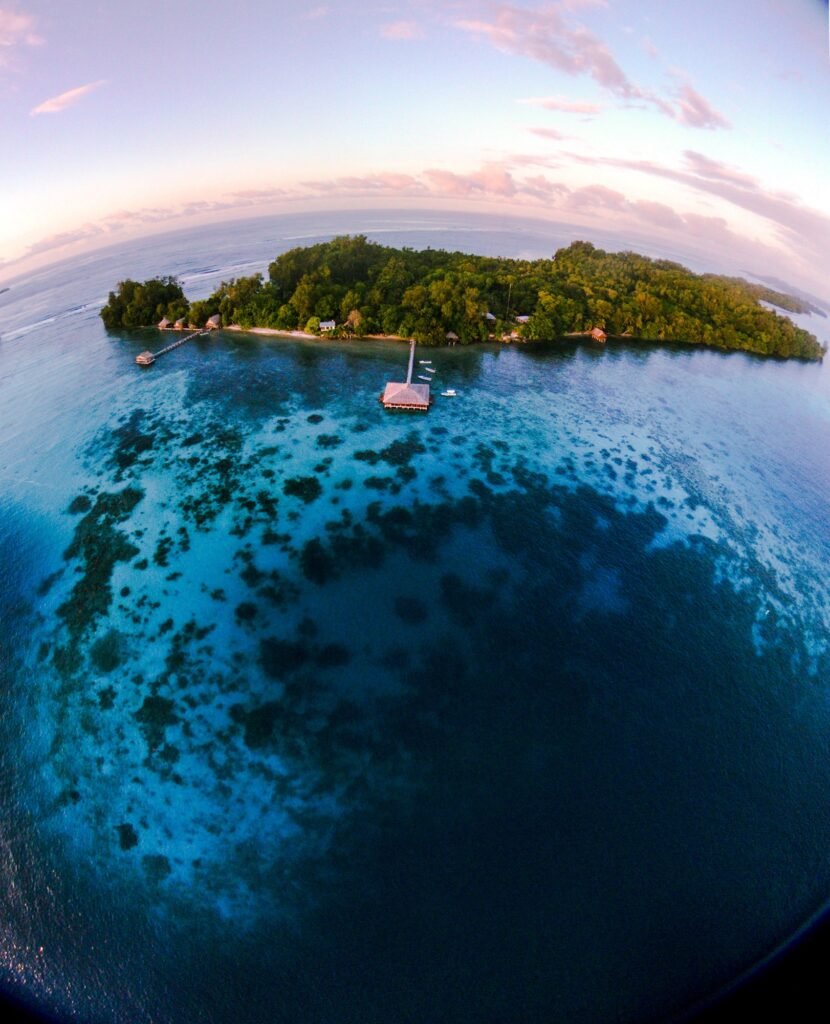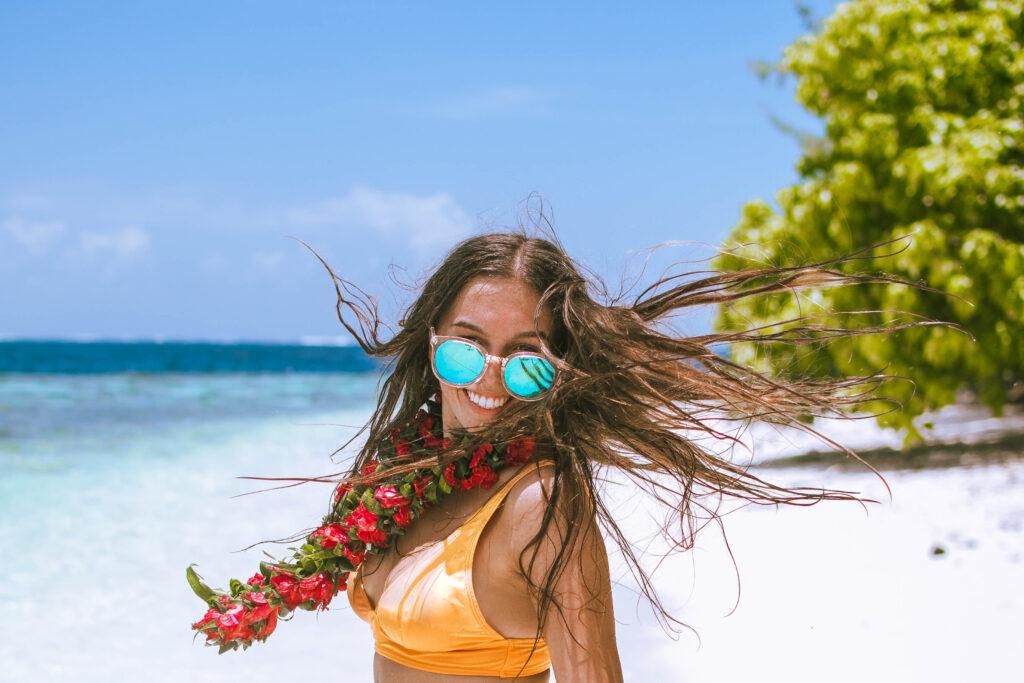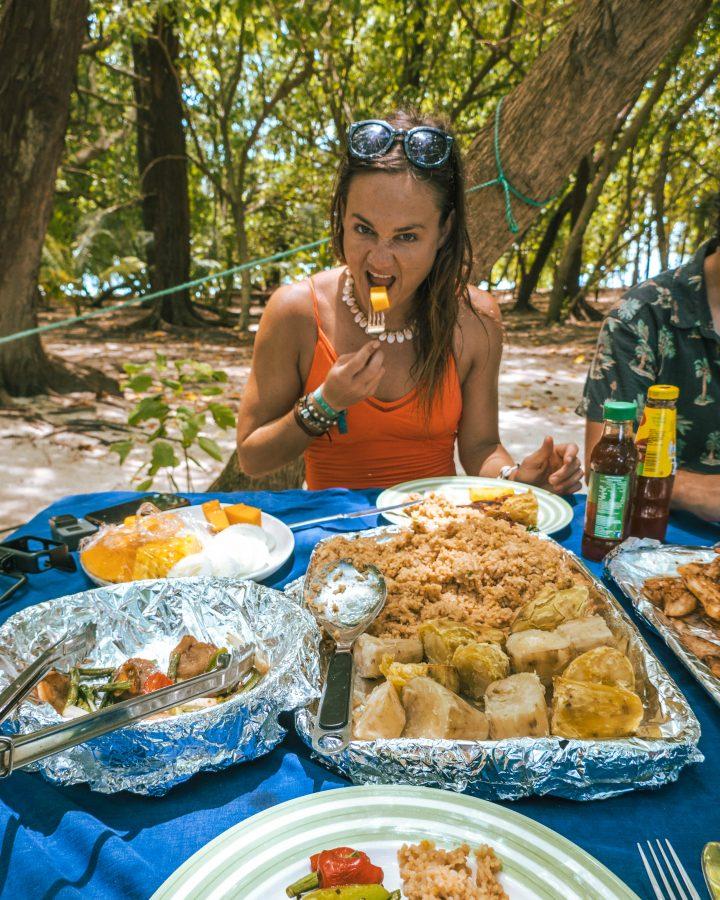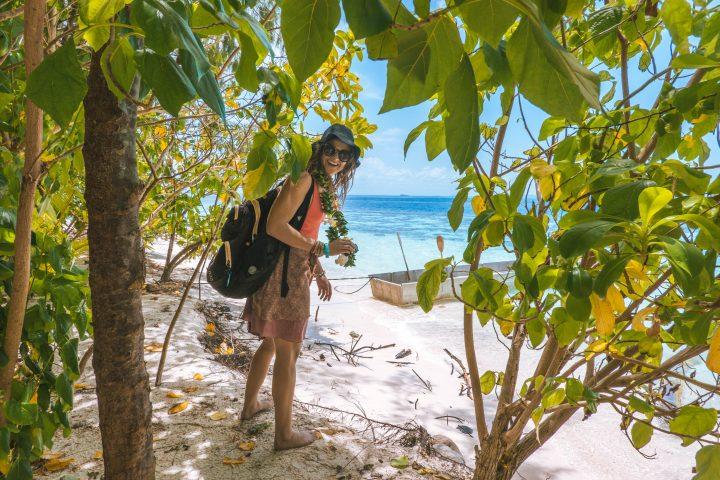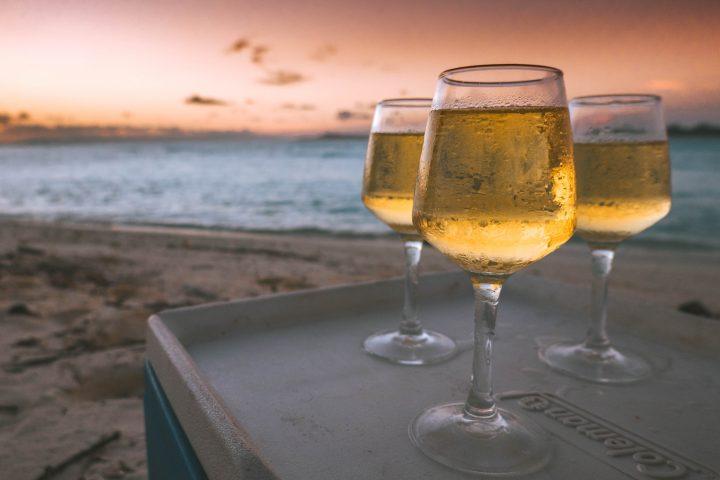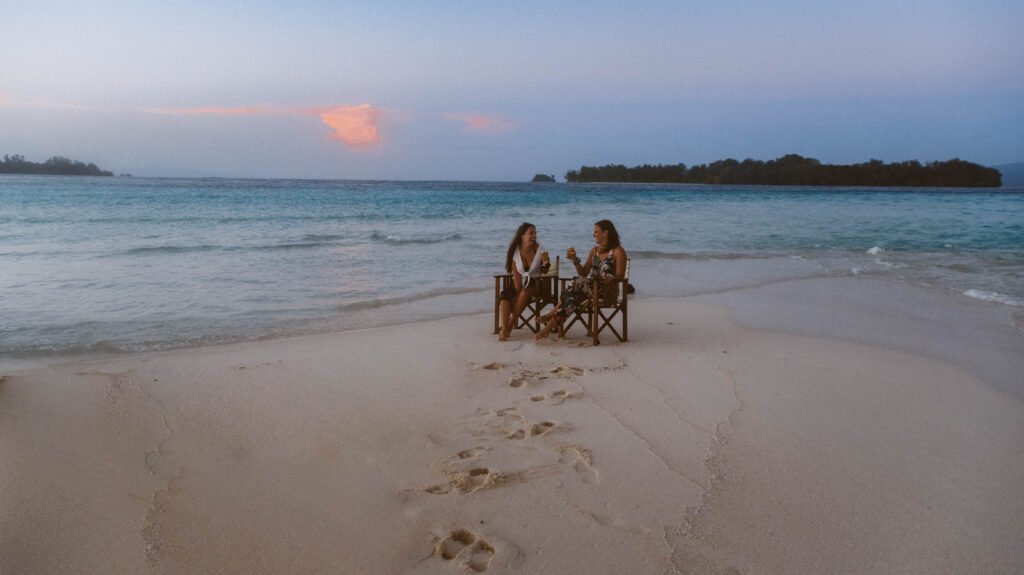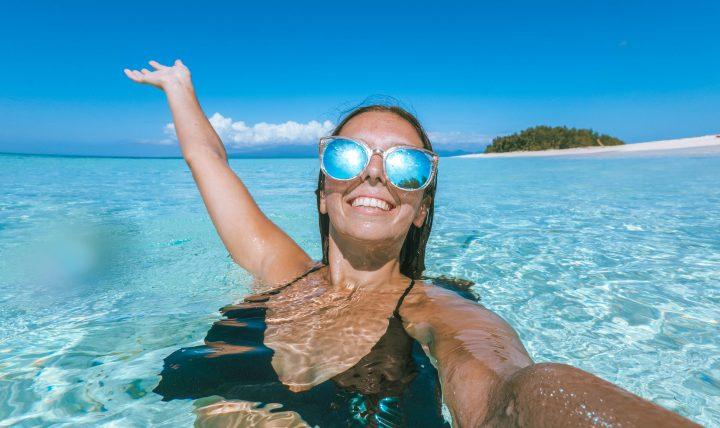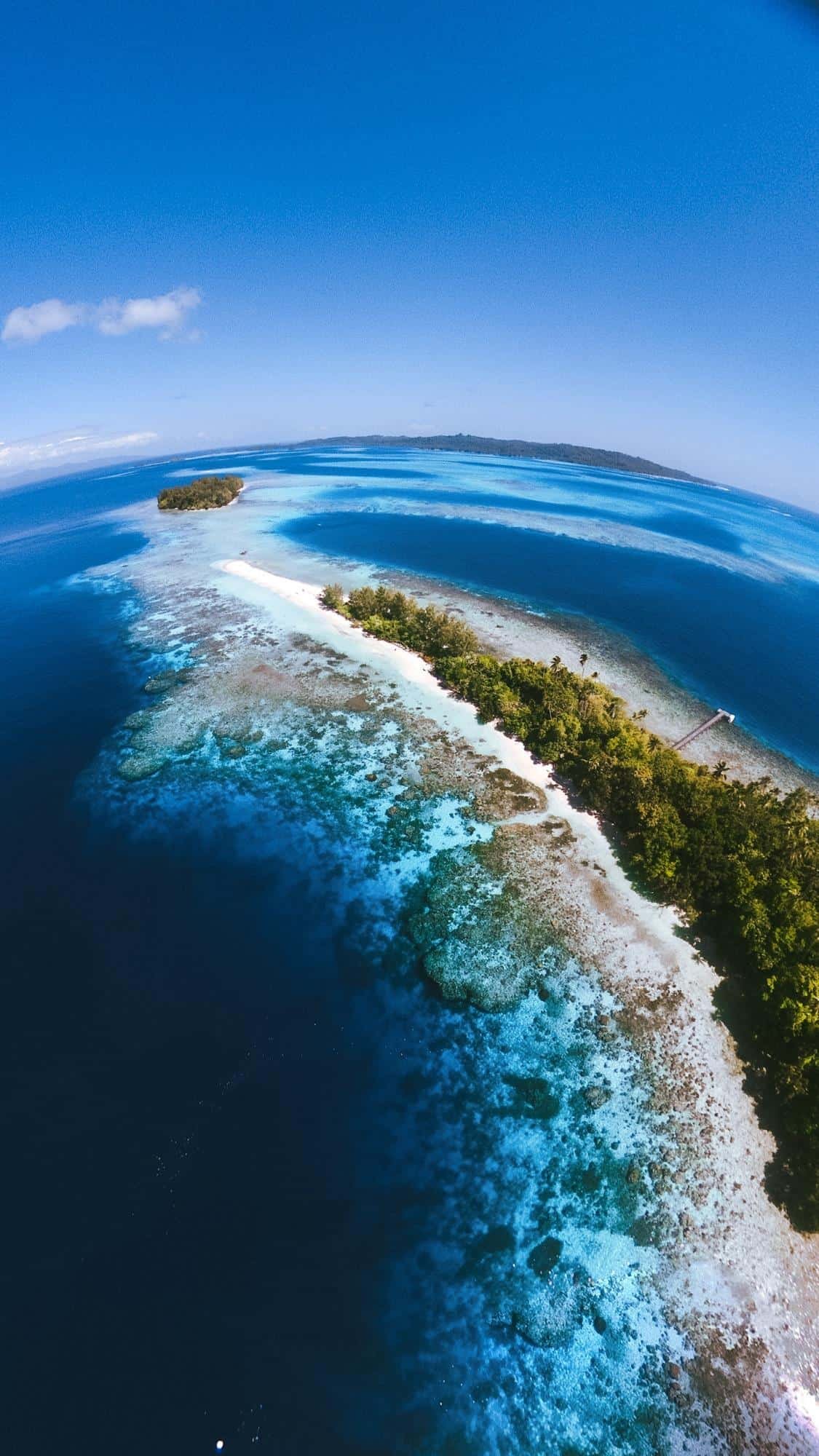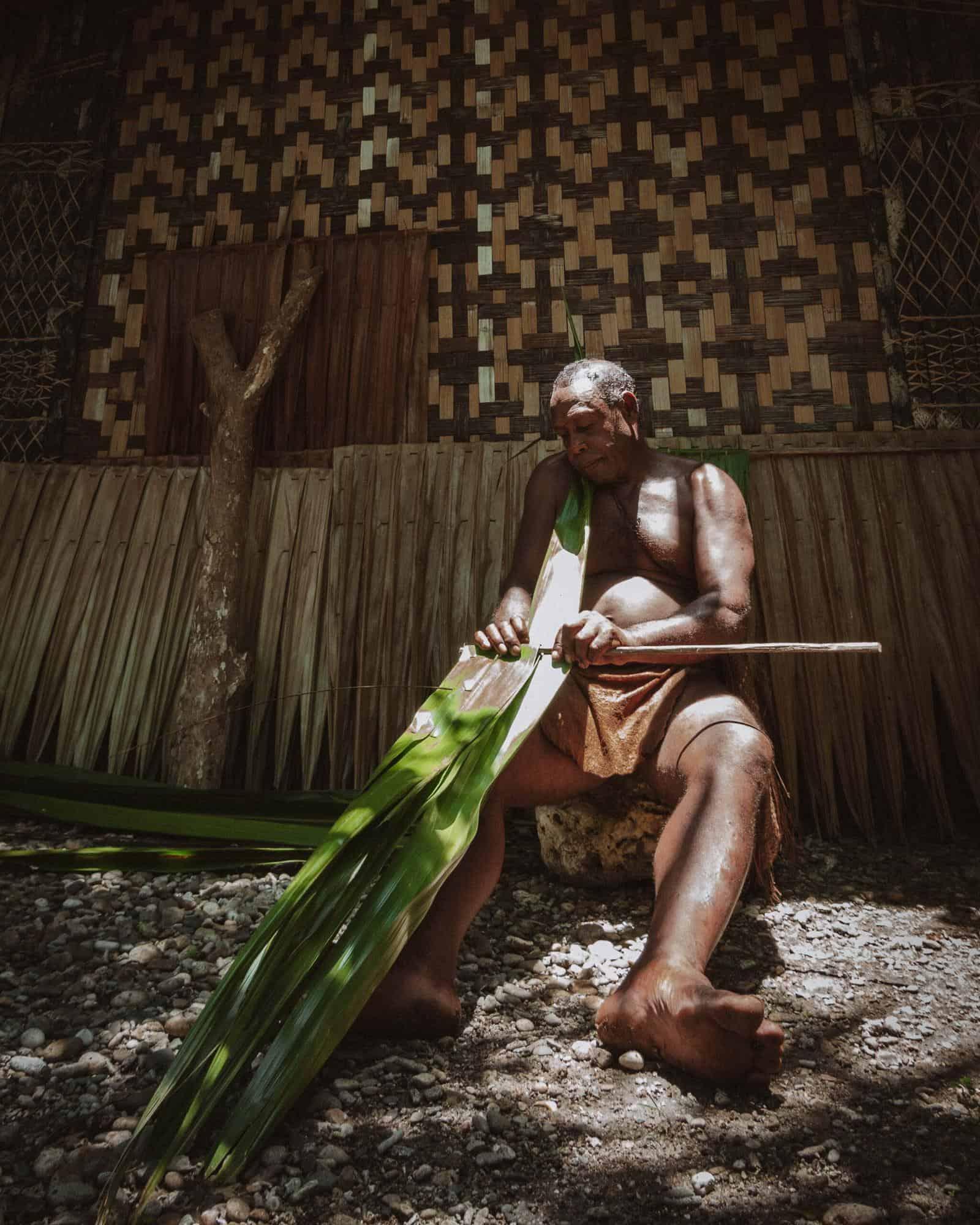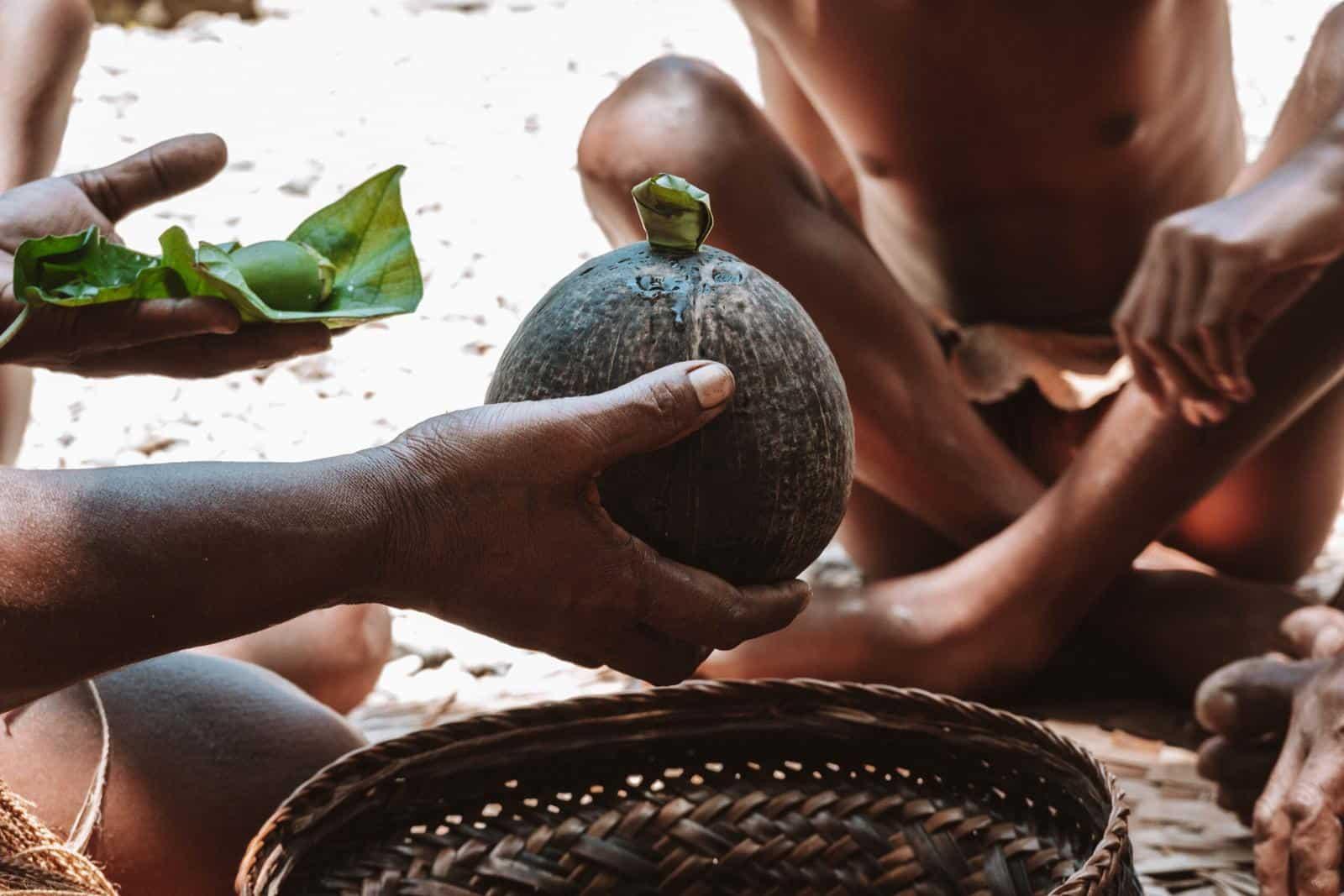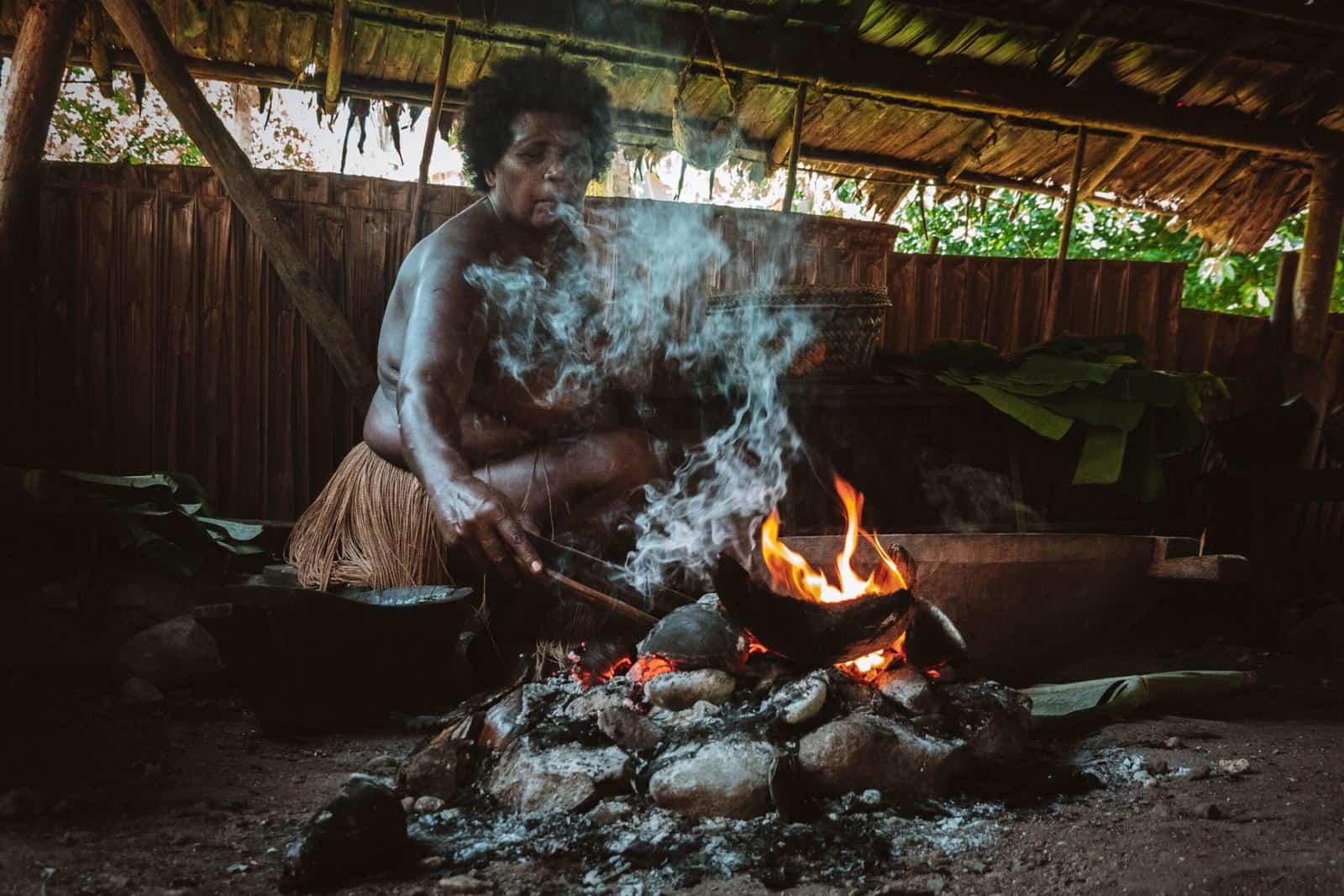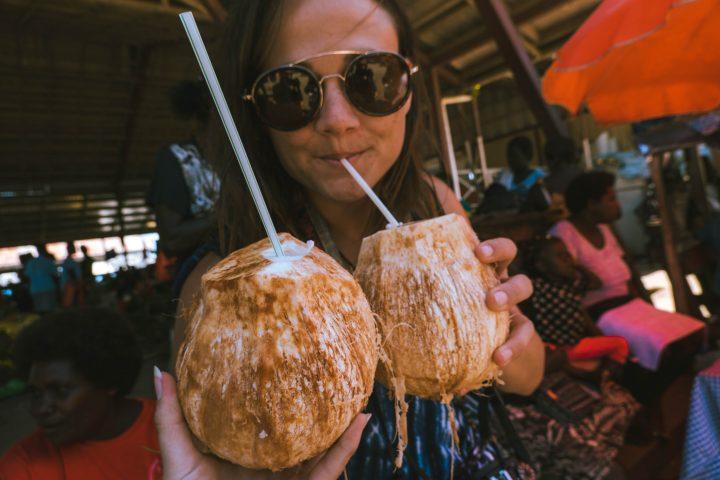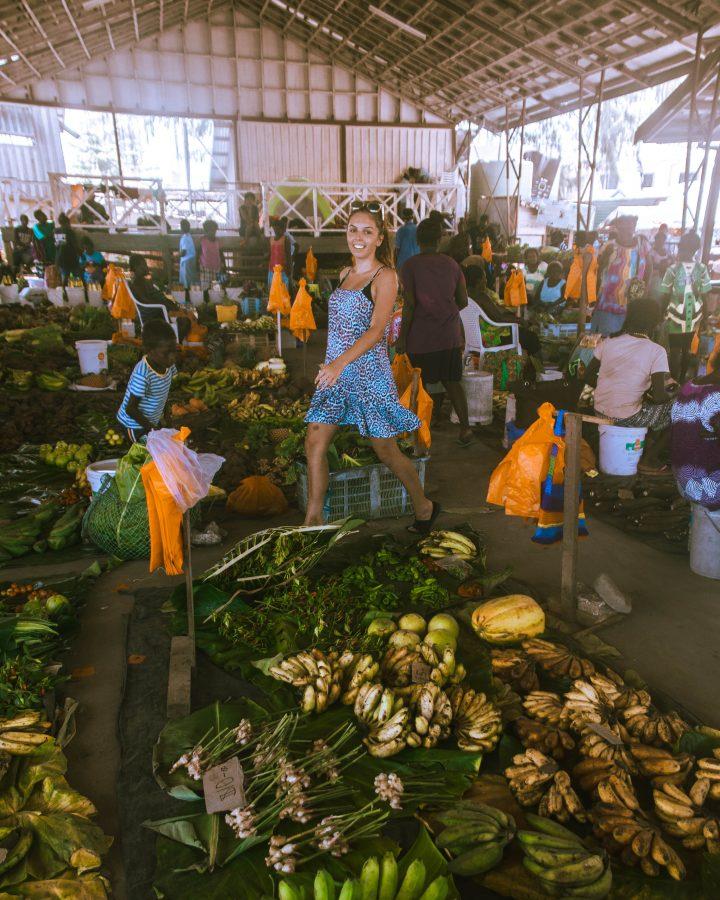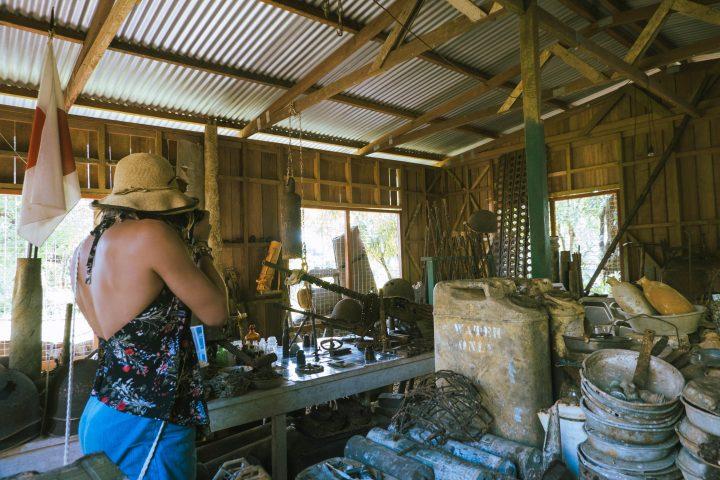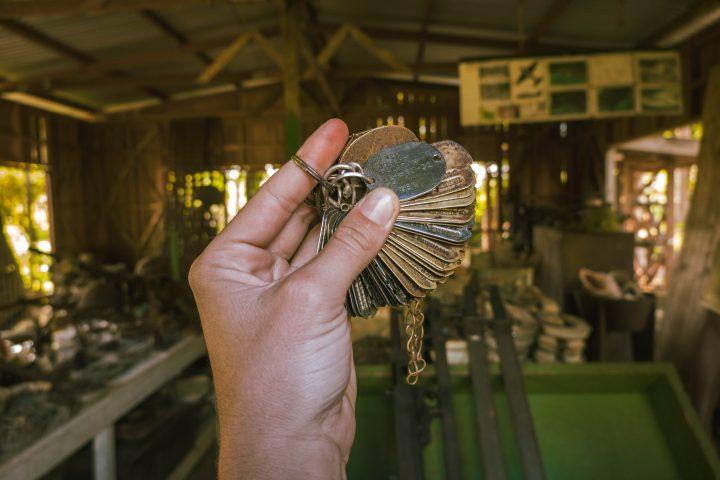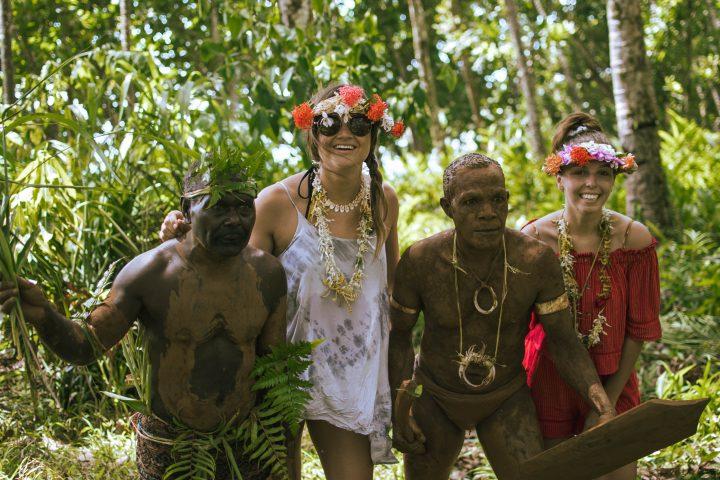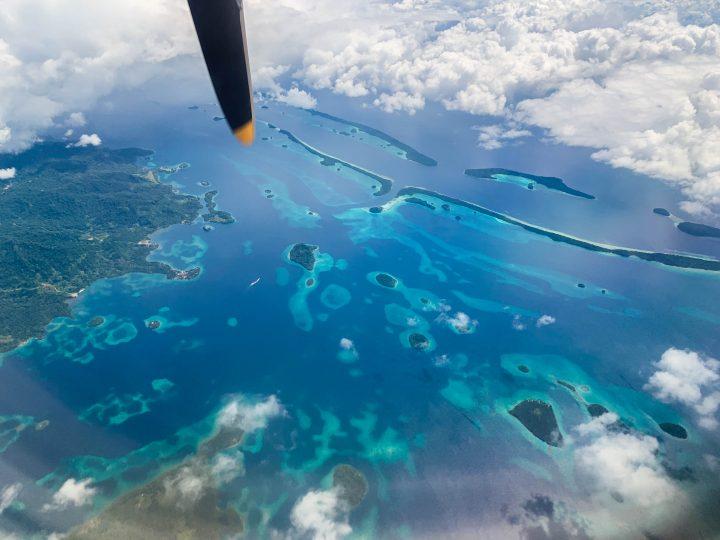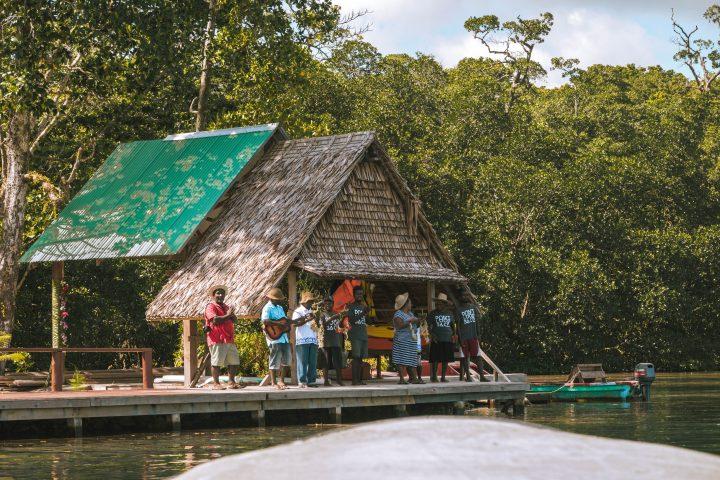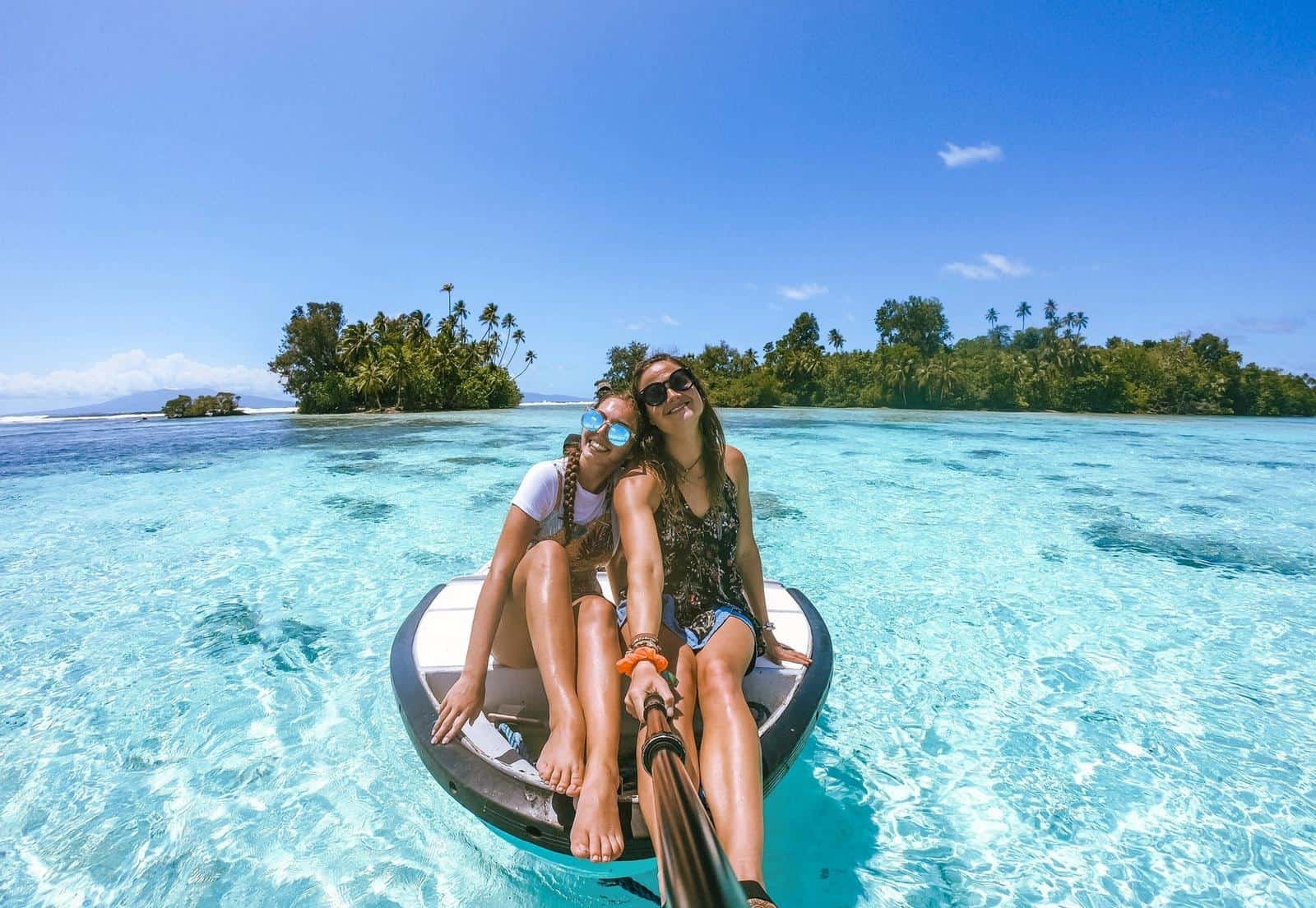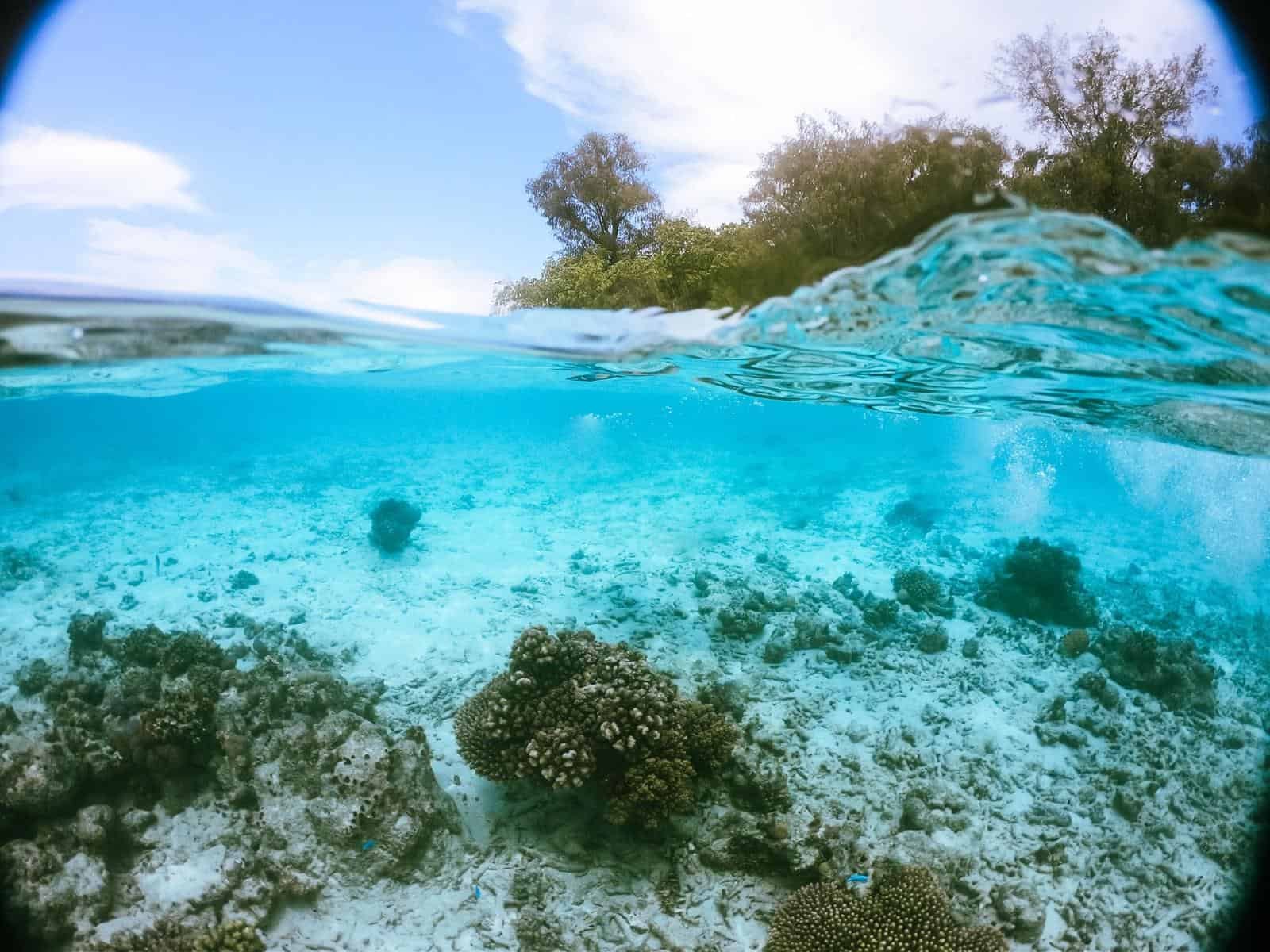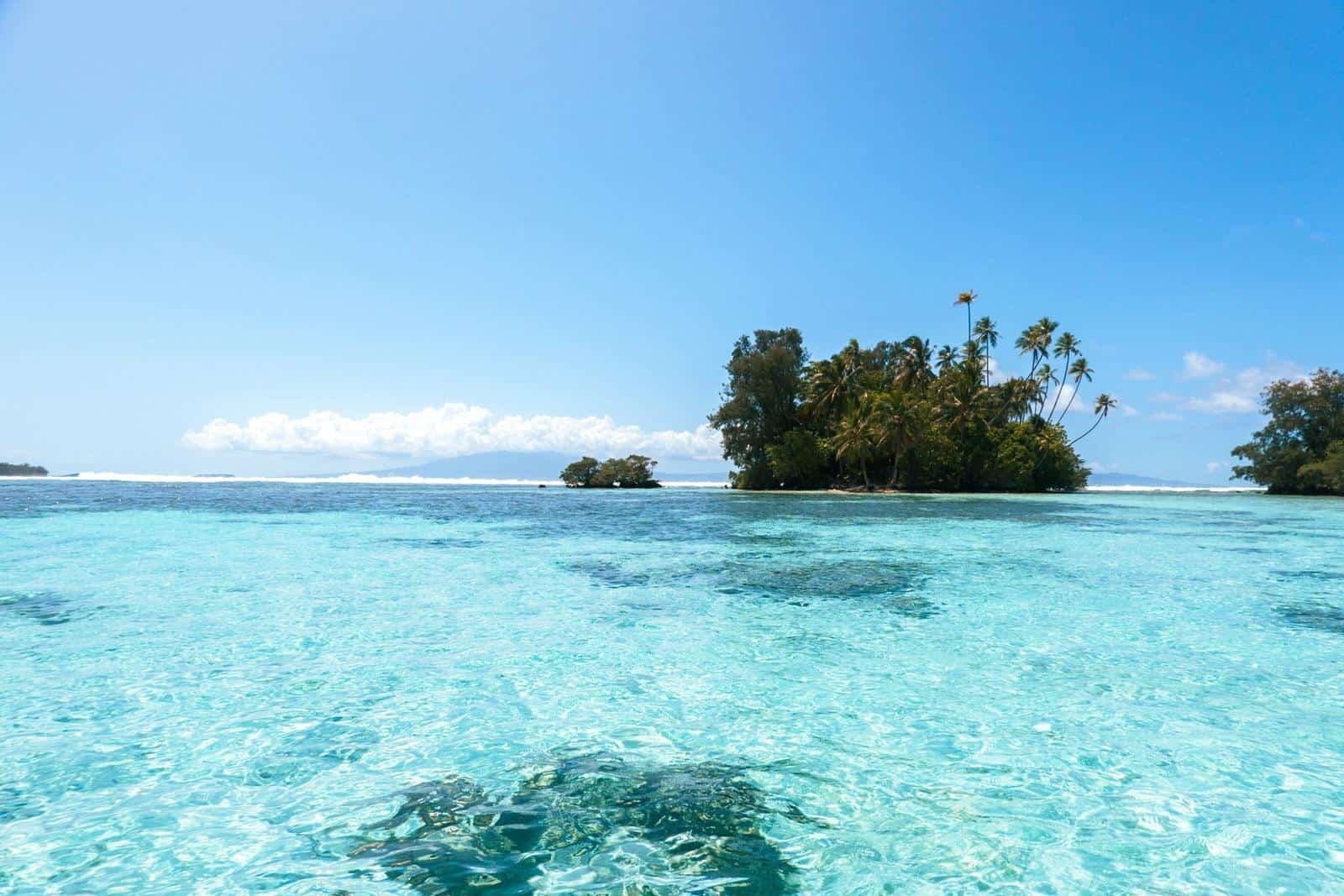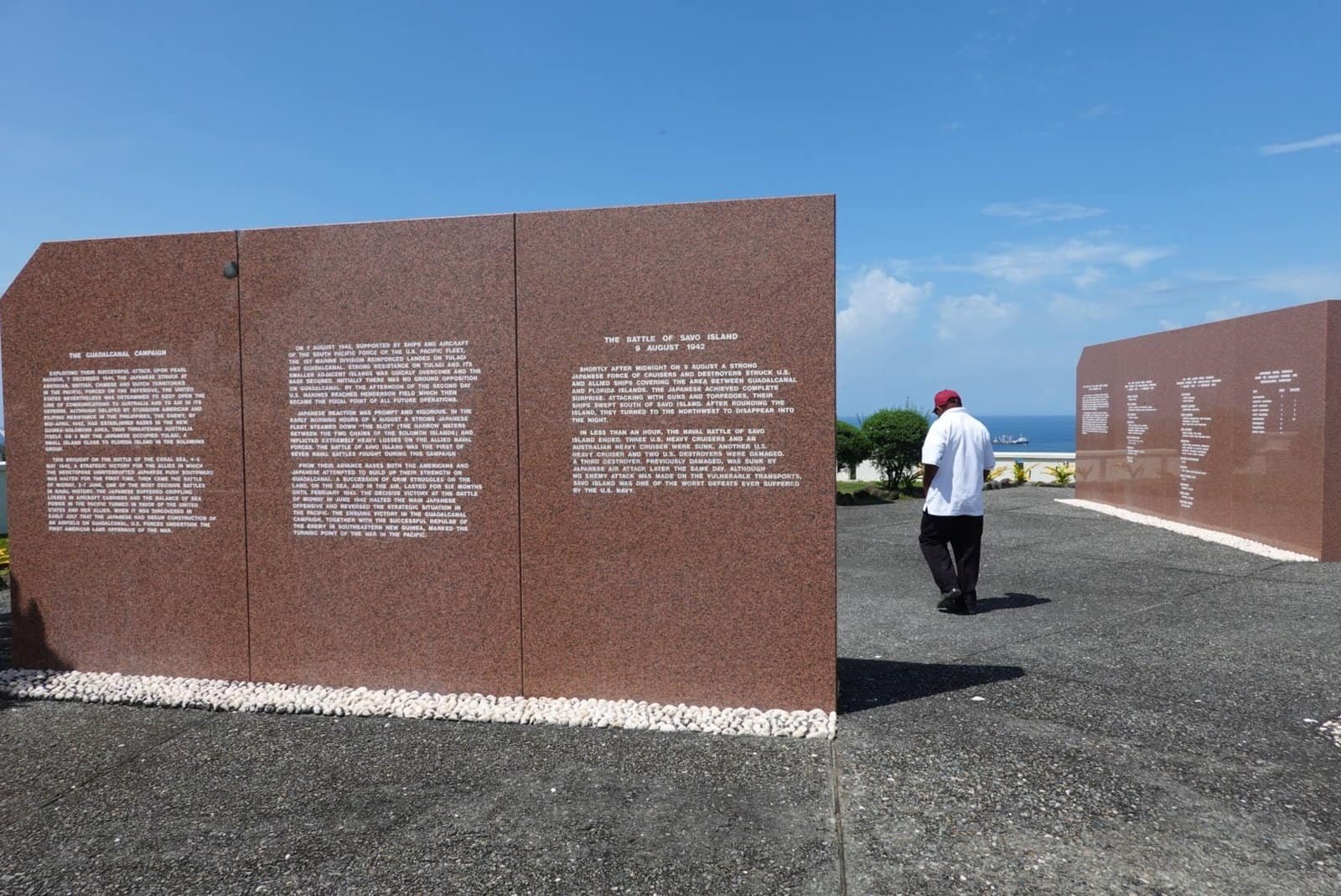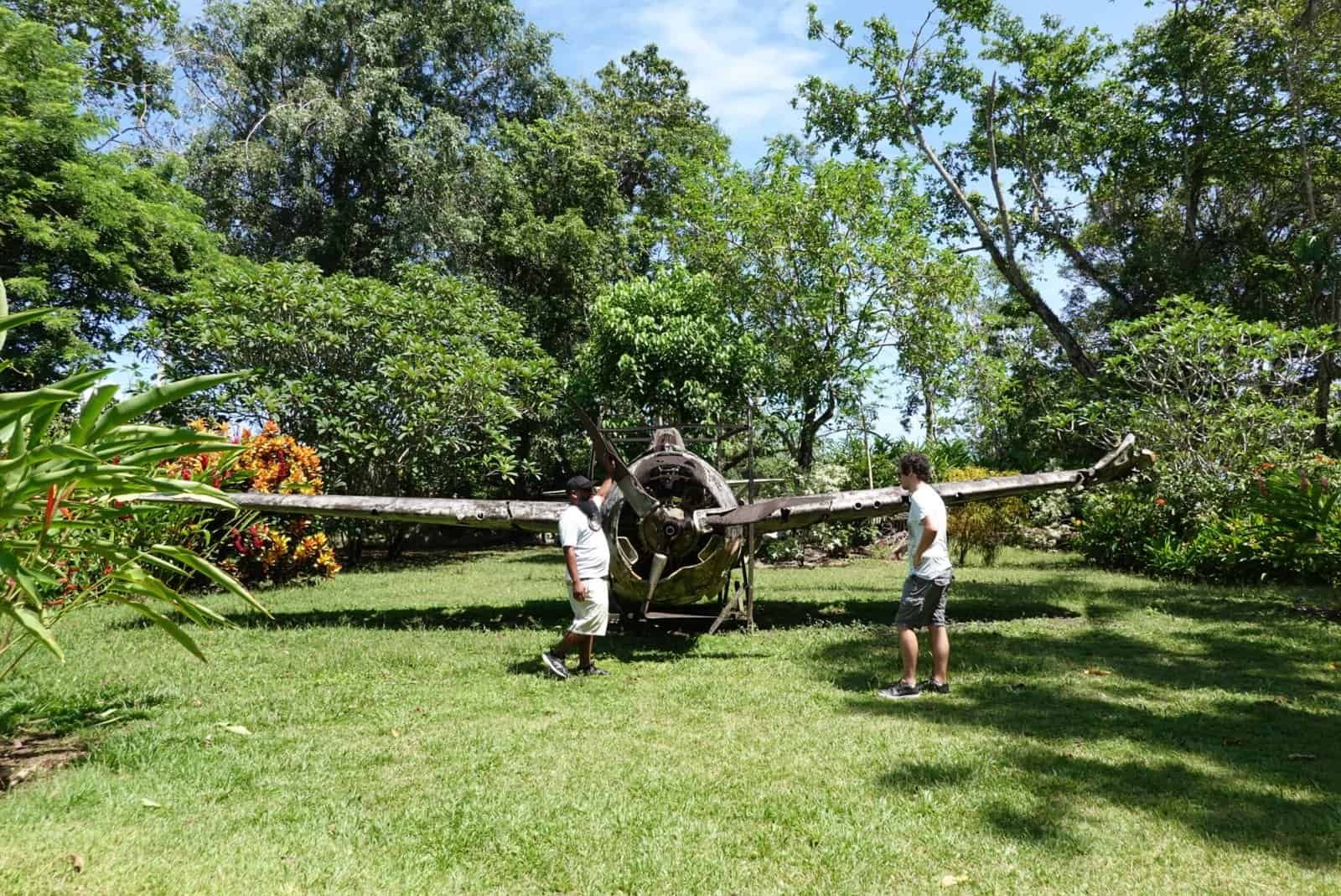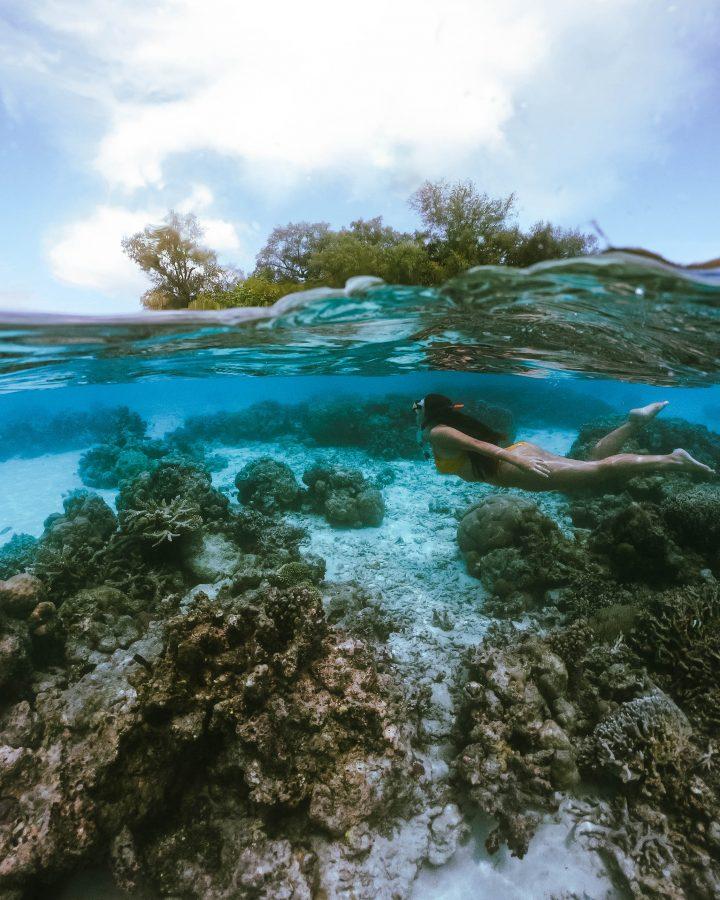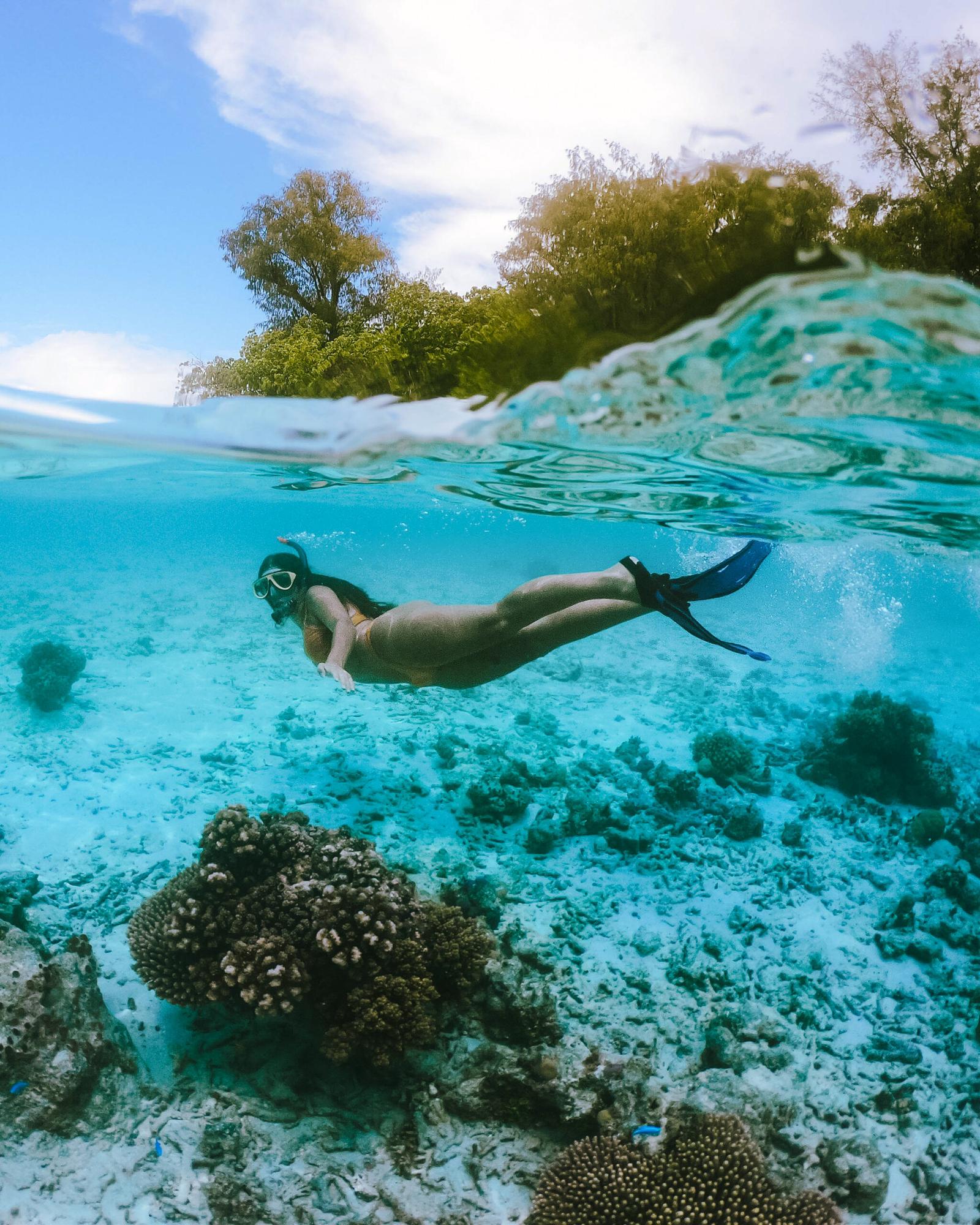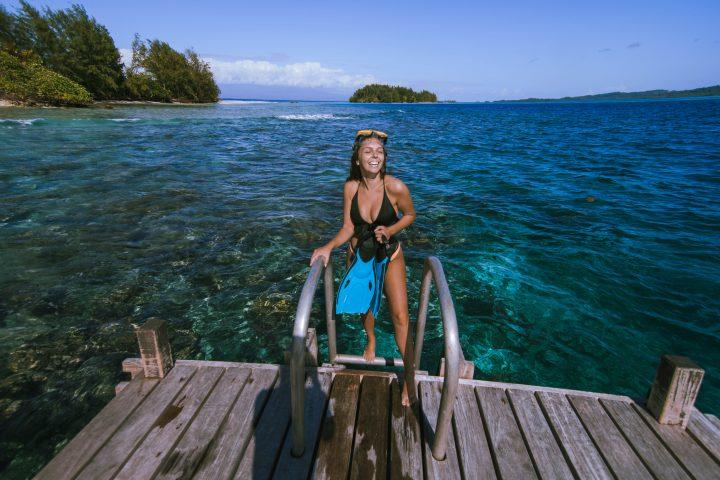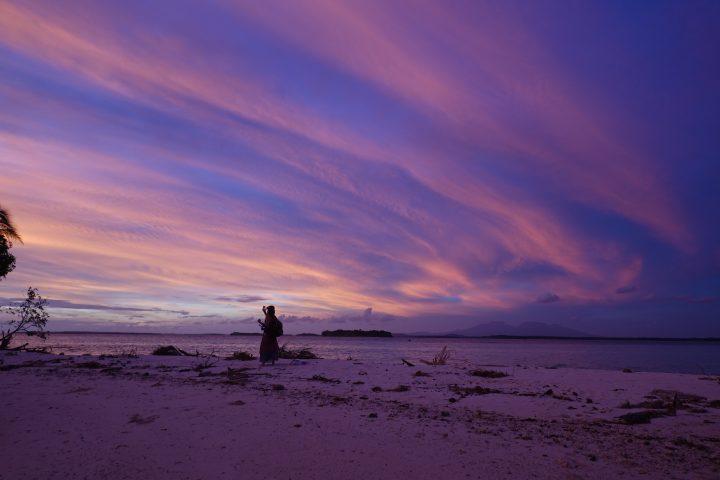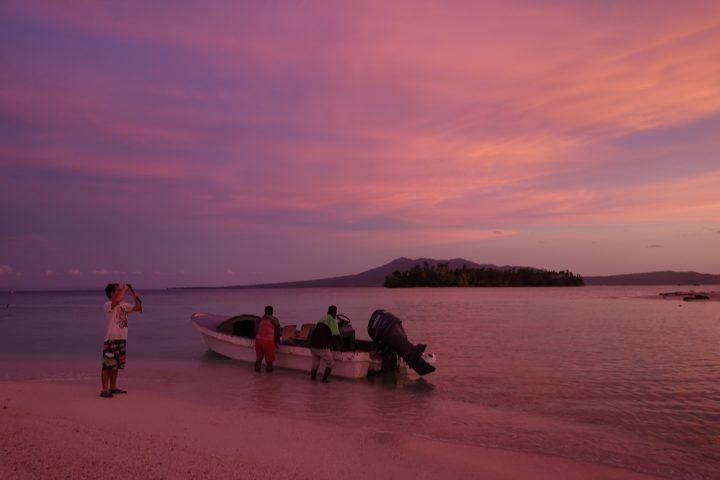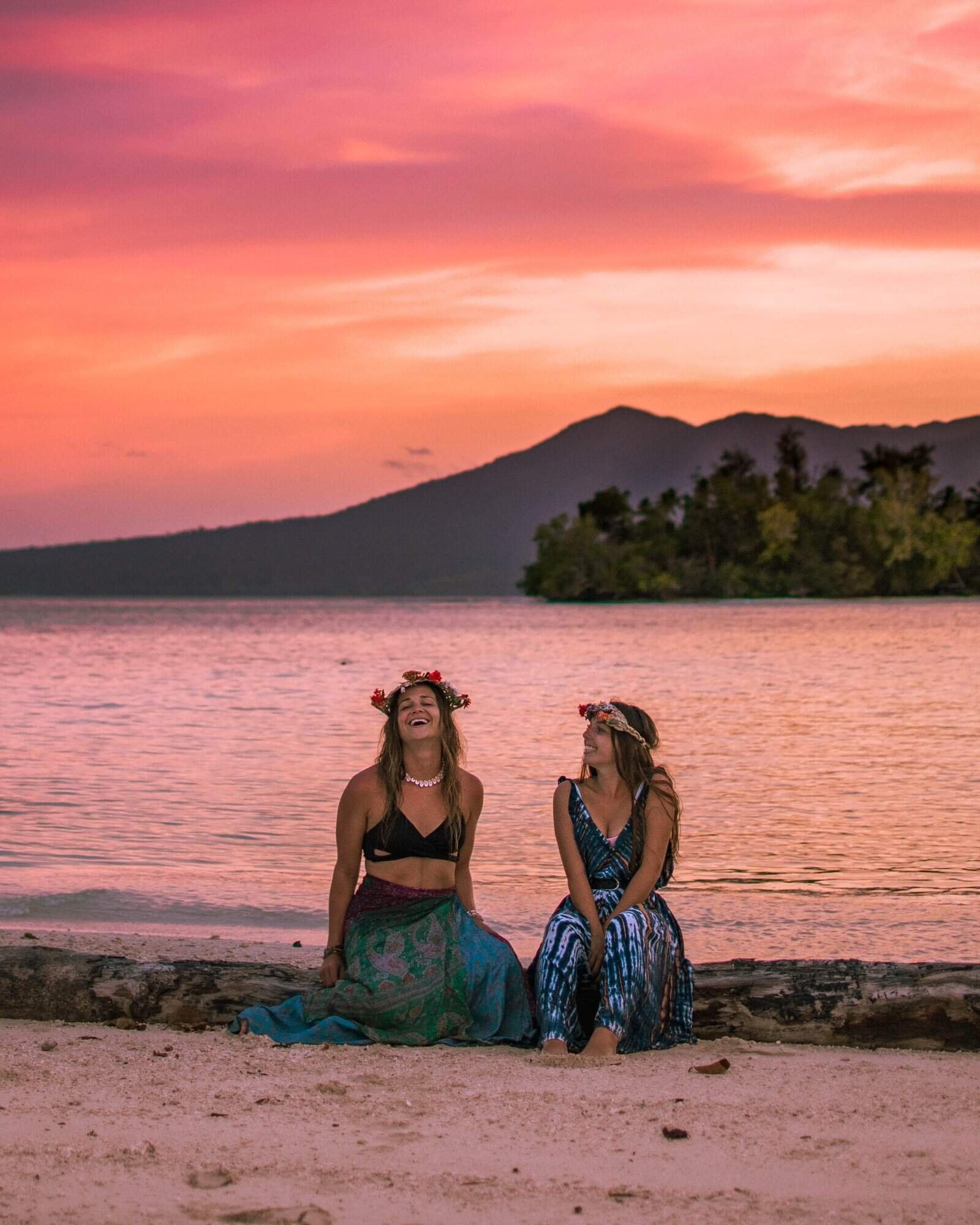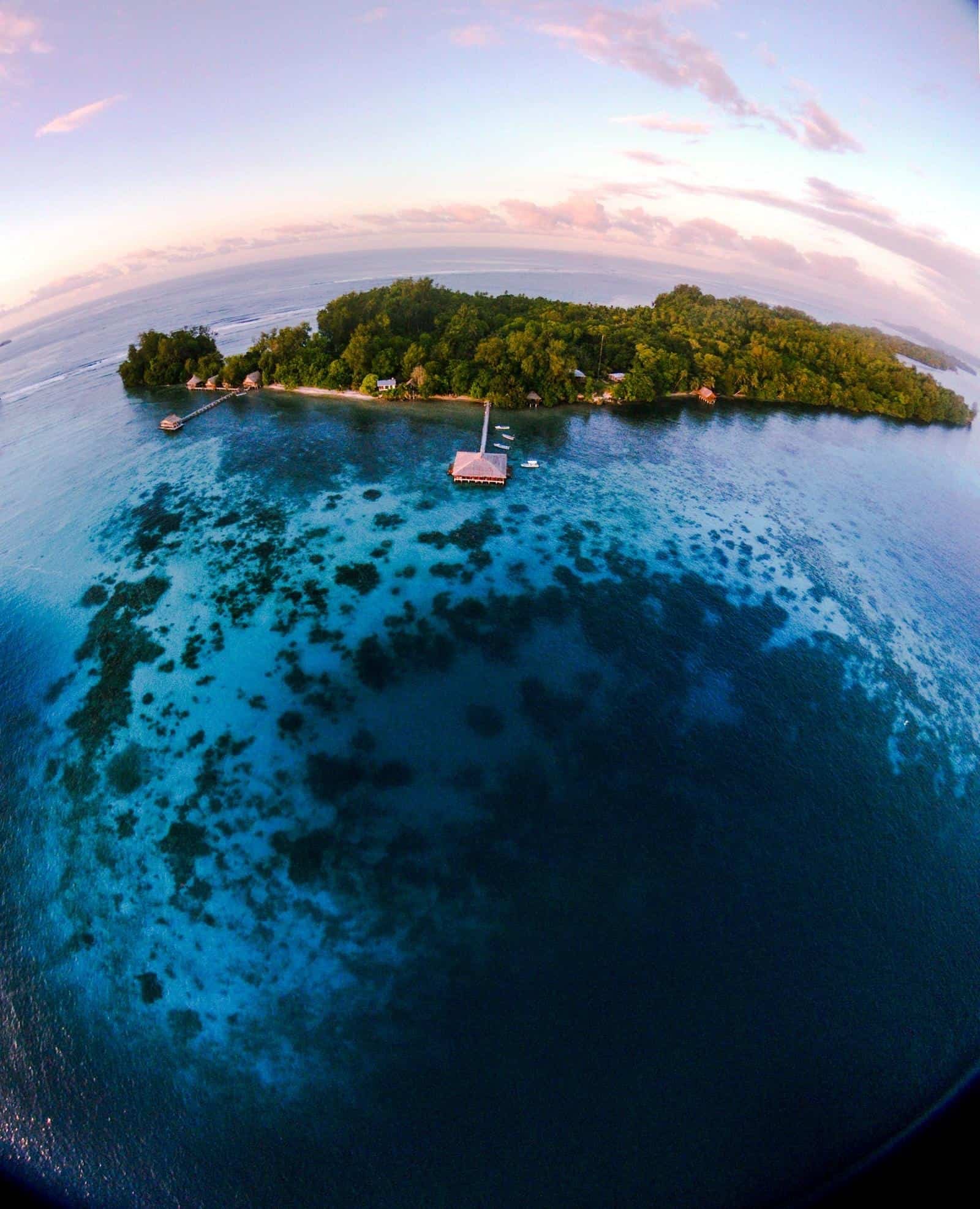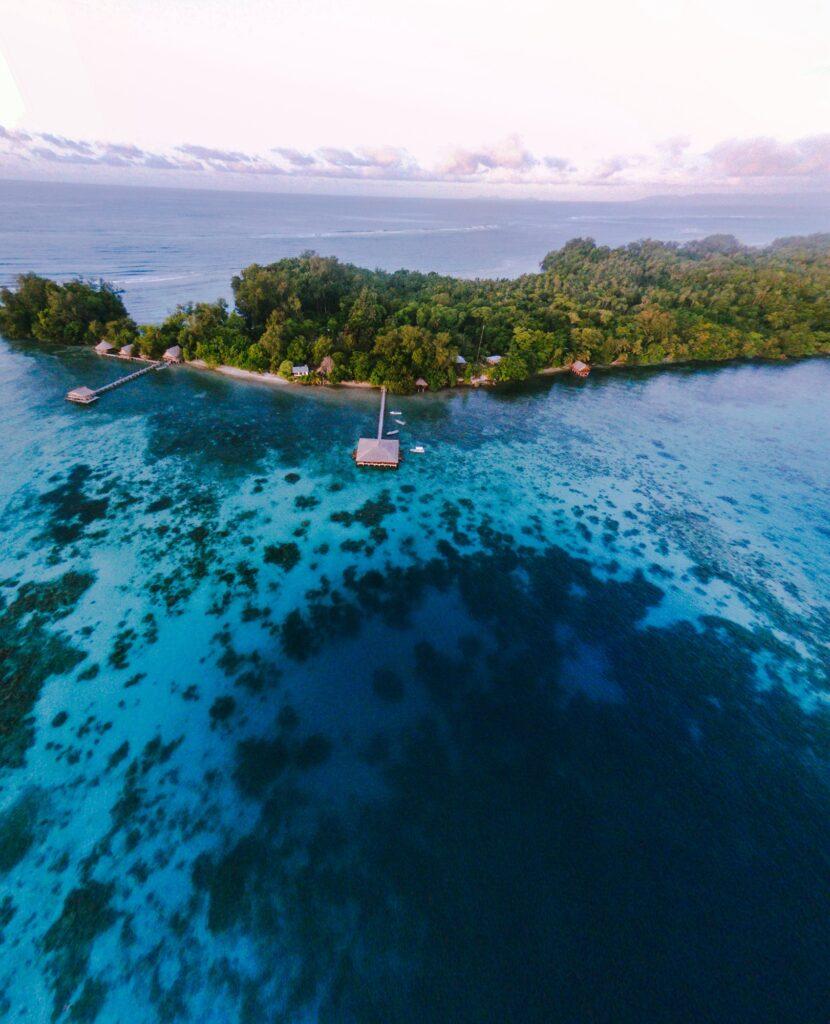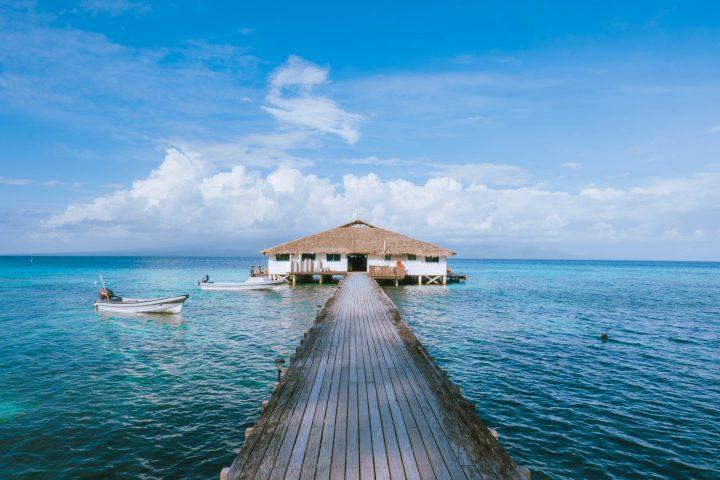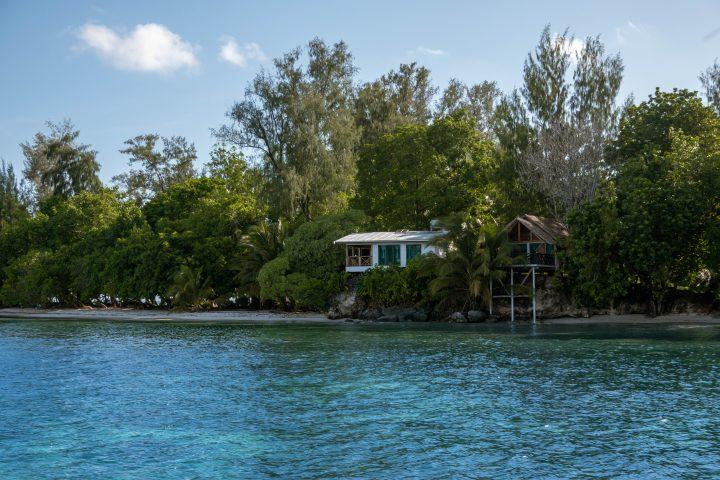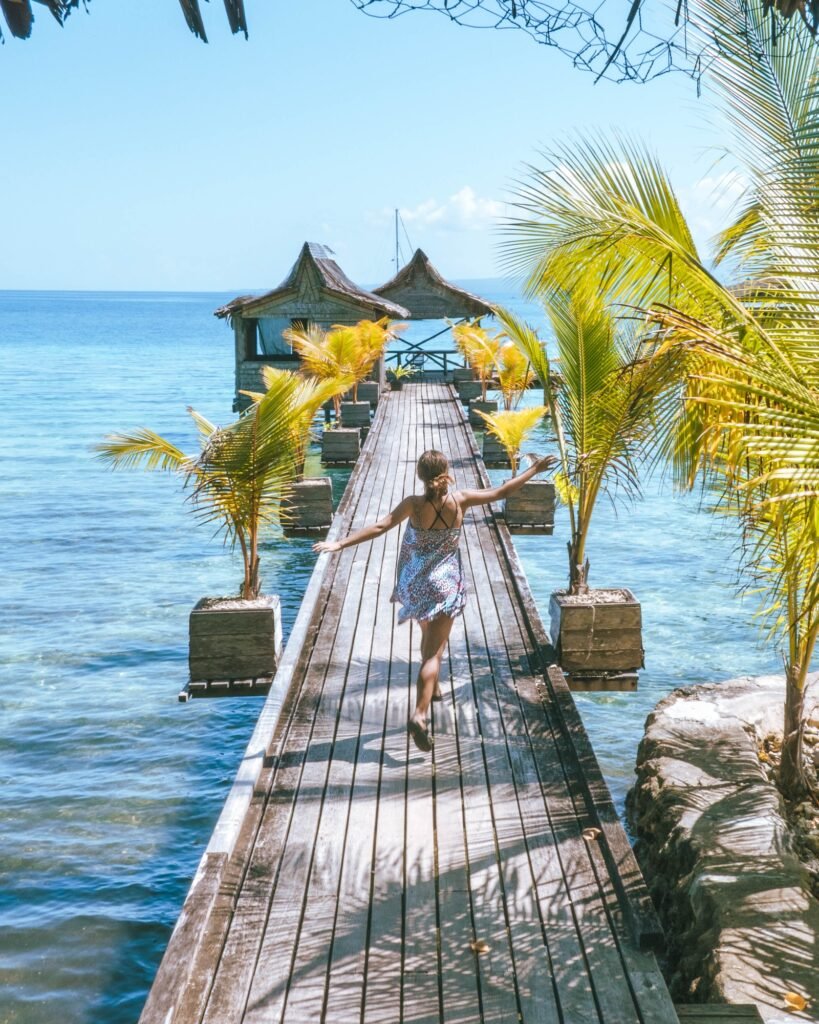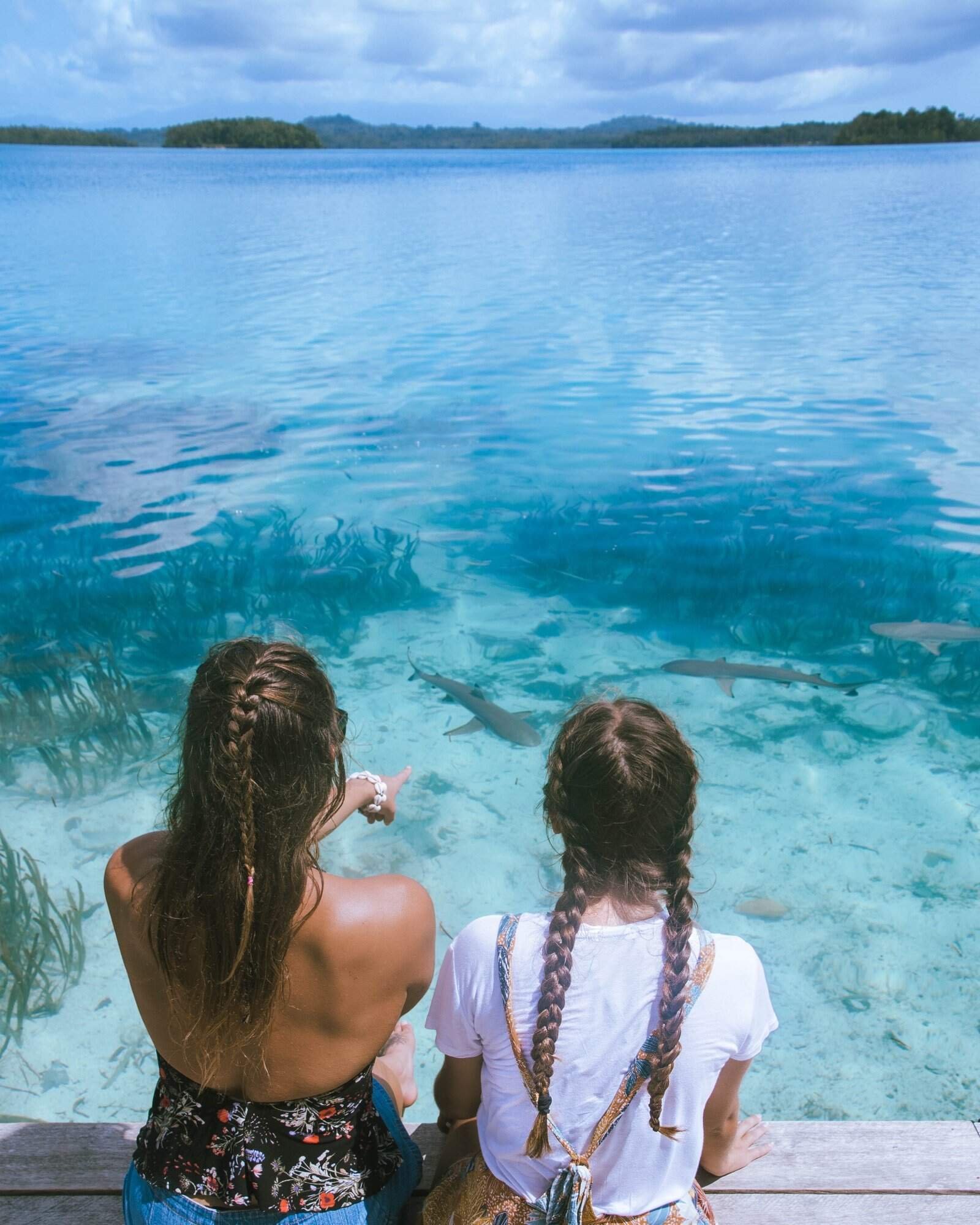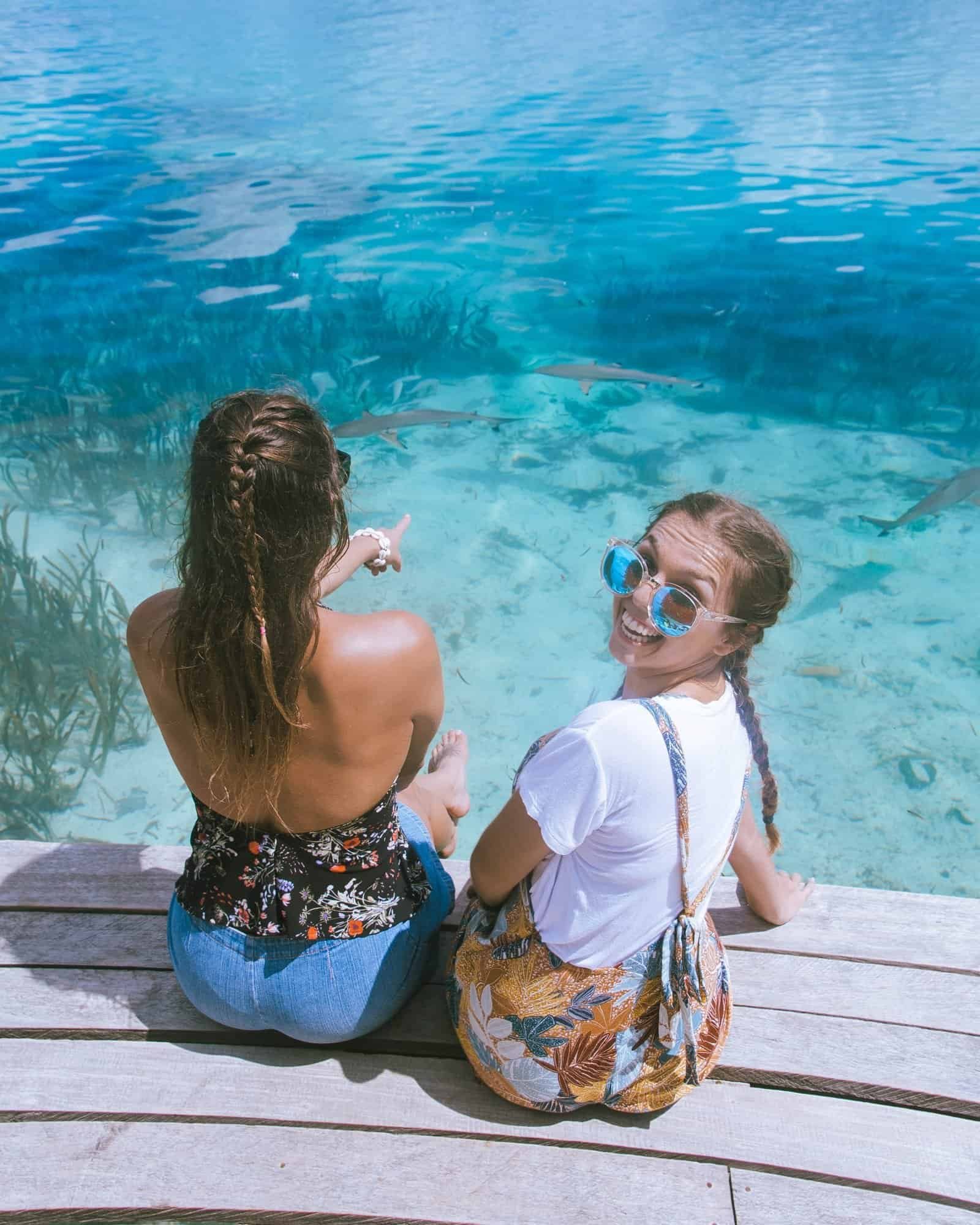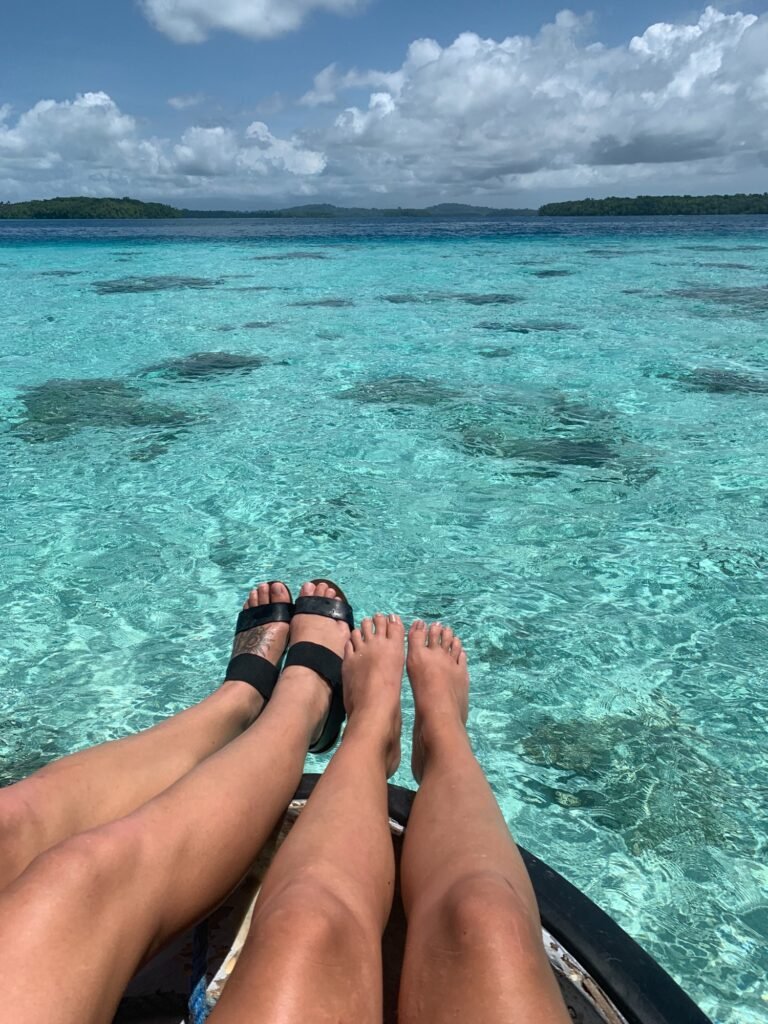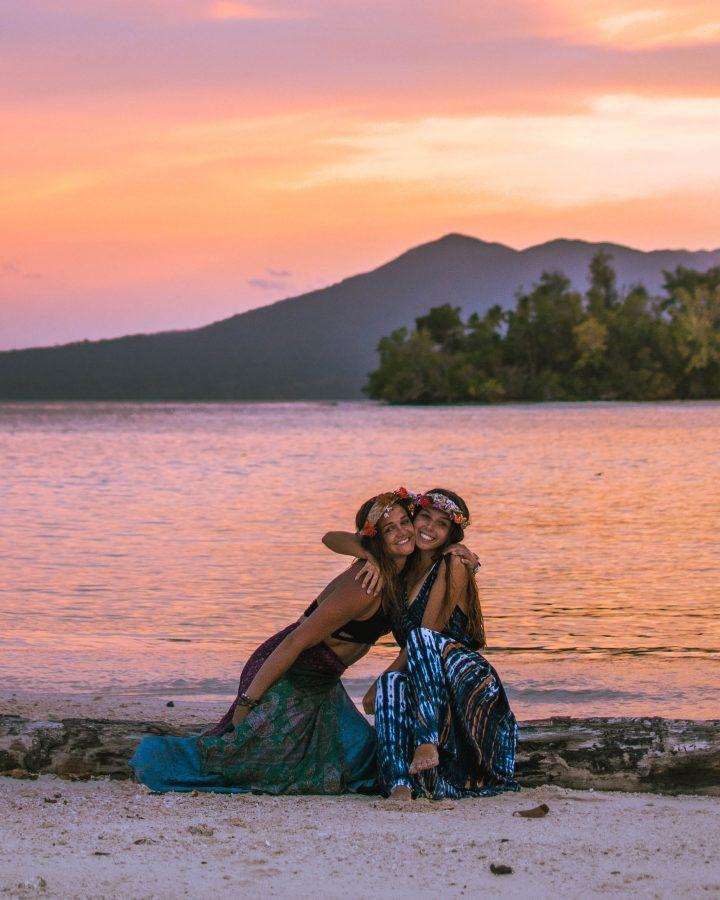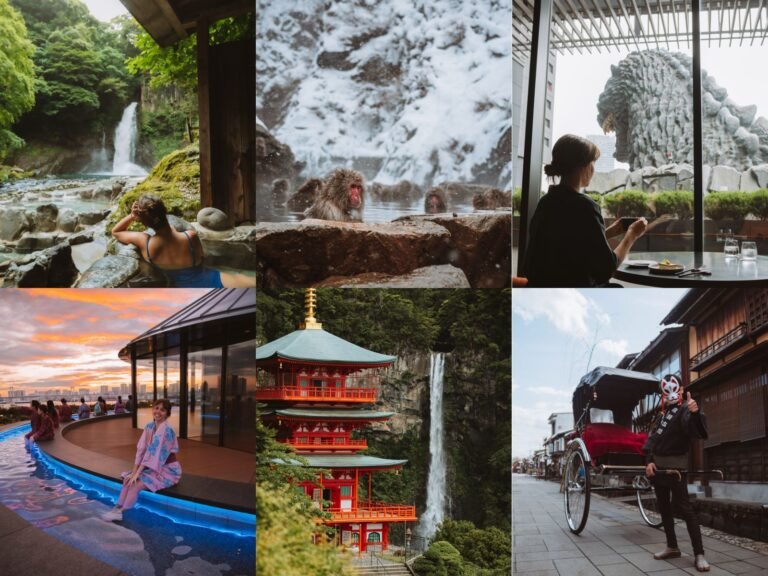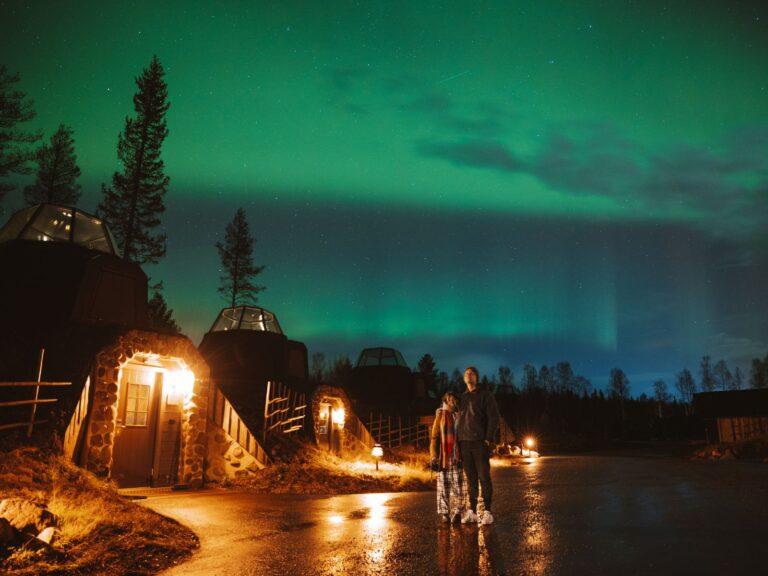26 Unique Things to Do in the Solomon Islands
When most people dream of a South Pacific escape, their minds usually wander to places like Fiji or Vanuatu. But just a little further off the beaten track lies a true hidden gem that deserves a serious spot on your travel radar. Welcome to the Solomon Islands.
This unspoiled paradise is home to crystal waters that rival the Maldives, world-class diving, a rich local culture, and even one of the planet’s most active submarine volcanoes. It’s raw, real, and refreshingly untouched by mass tourism.
Don’t be fooled by its lack of Insta-famous hotspots and smaller size; you will not be short on things to do in the Solomon Islands.
In fact, I have gathered 26 of the best, most unique and adventurous things to do in the Solomon Islands that just might convince you to book that flight right now.

What makes the Things to Do in the Solomon Islands unique?
1. Day Trip to Kennedy Island
What makes Kennedy Island Famous?
Kasolo Island is more commonly known and named after the 35th President of the United States. No, literally!
During WWII, John F. Kennedy’s patrol boat was struck by a Japanese destroyer nearby. Along with his surviving crew, he swam to this very island where they took refuge.
Its unique history is a key reason for the island’s popularity, especially with the annual event ‘The Kennedy Island Swim’; Where brave participants swim the distance JFK and his crew swam to commemorate the anniversary of the PT-109 incident.
Where is Kennedy Island
How to get to Kennedy Island
Kennedy Island is an easy 10-15 minute boat ride from Gizo Harbour. Even closer from Fatboys Resort (where I stayed and brag about a little more later on…)
Local tour operators, hotels, and guesthouses can arrange boat transfers or guided tours. With many packages including snorkelling gear, drinks, and a beach picnic. Perfect for a laid-back day trip to explore the island and its WWII history.
Things to do on Kennedy Island
Even if War history is not your thing or even a long-distance swim for that matter, you will not get bored on Kennedy Island.
Home to a colourful wildlife scene, from the birds in the sky to the fish in the sea. It is the perfect place to explore, relax and definitely have a picnic. In fact, many refer to it as Plum Pudding Island because of just that.
2. Private Sunset Wine-down on a Sand Bank
What is a sunset wine-down?
A playful take on winding down from a big day, the sunset WINE down is a simple beach picnic set up to watch the sunset with a chilled wine in hand.
Picture yourself on a private sandbank as the skies begin to glow a fairy floss pink. Sipping in wine, sharing stories from a big day of diving and exploring this underrated paradise.
How do you book a sand bank sunset?
While there may be a few local tour providers you can arrange yoru own transfers with, these are most run through the hotels and guesthouses who will also supply the wine, chairs and boat transfers.
Ours was arranged with Fatboys Resort, Gizo.
Klook.comDon’t forget to pack
- Bug Spray
- Wine (your hotel should have this covered)
- A picnic blanket or beach chairs
- A cooler
- An overshirt – it can get pretty chilly on the boat back to your hotel once the sun has set.
3. Experience the World’s Best Diving at Njari Island
What makes Njari Island famous?
Renowned for having the highest fish species counts ever recorded in a single dive, Njari is a bucket-list destination for avid divers and snorkellers.
This tiny, uninhabited island sits at the meeting point of nutrient-rich ocean currents, creating incredibly unique and booming marine biodiversity just off its shores.
If you could only spend one day in the Solomon Islands, it should be here, enjoying the crystal-clear waters, healthy coral reefs, and world-class dive sites.
Where is Njari Island
How to get to Njari Island
Njari Island is about a 20–30 minute boat ride from Gizo Harbour.
Most local dive shops and resorts in Gizo offer day trips to the island, usually including snorkelling or diving excursions, beach time, and sometimes even a BBQ lunch on the sand.
Our visit was part of an extended island-hopping day with Gizo Dive Shop.
Other things to do on Njari Island
You enter the island at its single jetty. Where we spotted a shoal of squid before we even had the chance to dive in for a snorkel or swim!
You could easily spend the day based at the jetty making the most of the endless coral reefs, but I promise it is well worth exploring beyond.
A short walk through the palm trees the island opens up into a long sand bank which grows even longer during low tide to connect you to the neighbouring island!
The waters around the sand bank are calm with soft, silky, white sand beneath your feet, ideal for a leisurely swim.
4. Get involved with Traditional Workshops
What to expect from traditional workshops in the Solomon Islands
I was lucky enough to experience multiple traditional workshops throughout my week in the Solomon Islands, and while they had their similarities, they also had differences.
For example, the first one was in a cultural village set up in Honiara. Although the family no longer live like this and the village is simply an educational attraction, it was an interesting way not only for tourists to learn about the culture but also the younger generations to maintain tradition.
Similar to our first local village visit in Honiara, but on a much bigger scale, we were taken through traditional workshops with an entire local community on Rendova Island, Munda.
From washing in the rivers to drying off by the fire, cooking up a storm in banana leaves to weaving techniques and the endless possibilities of what can be created when implemented, wood carving and making clothes, not to mention, meeting the local eels in the river. All the while, almost all of the children of the village followed us every step of the way.
Where to book a Traditional Workshop
Visits are typically arranged by appointment or through a guide, as many villages are not open to unannounced tourists unless it is a dedicated cultural centre like our stop in Honiara.
Look for community-run tourism projects, which ensure your visit directly supports local communities. Some notable options include:
- Tetepare Island Eco-Lodge (Western Province): Offers cultural and nature-based experiences led by local rangers.
- Marovo Lagoon villages: Known for skilled woodcarvers and authentic cultural exchanges.
- Lilisiana Village (Malaita): Accessible from Auki, this village is known for its shell-money crafting and stilt houses.
Operators such as Dive Gizo, Solomon Islands Discovery Cruises, or Tourism Solomons partners can arrange village visits.
Handy Rules for Visiting Local Villages
Like anywhere you travel, it is worth brushing up on the cultures and traditions before you visit. From what to wear, say, do or not to…
In this case, the key things to note are:
- Ask permission before taking photos
- Be open to trying new things
- Dress comfortably
- Bring a small gift or donation as a sign of respect
5. Try the famous Betel Nut
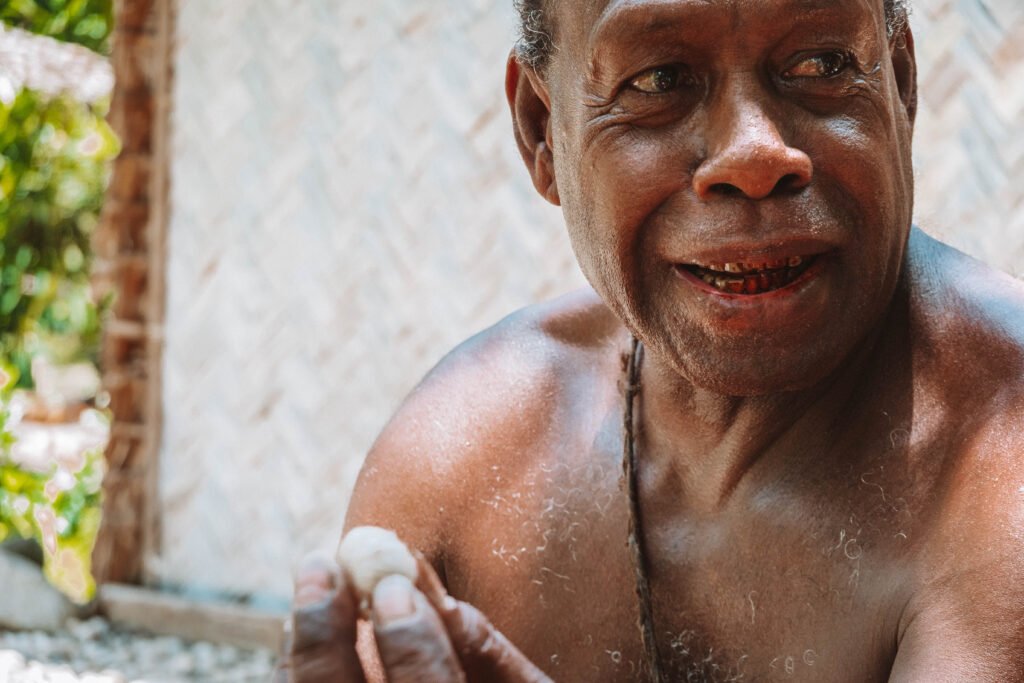
What is a Betel Nut
The betel nut is not actually a nut, but a fruit from the areca palm!
It’s typically wrapped in a betel leaf along with a bit of lime powder (from crushed coral or shells) and commonly, tobacco. This combination is chewed in the mouth, producing a mild stimulant effect and turning the saliva a bright red colour which is why you will see a lot of big red smiles in the markets.
Where can you try a Betel Nut
Betel nut is widely available at markets and roadside stalls, but it’s not recommended for travellers unless you’re familiar with its effects, which can include dizziness or nausea if you’re not used to it, especially mixed with tobacco.
What travellers should know before trying a Betel Nut
Chewing is often prohibited in hotels and public buildings, and spitting the red juice is discouraged in public spaces.
It’s an important part of local culture, so approach it with respect and curiosity, even if you choose not to try it.
6. Wander through the Gizo Markets
What are the Gizo Markets
The Gizo Markets are the main markets of the capital of the Western Province in the Solomon Islands.
A bustling open-air local market where vendors from local islands meet to sell and buy fresh produce, seafood and handmade crafts.
Wander through to soak up the local atmosphere, support the economy, connect with the community and drink your body weight in fresh coconuts.
Where are the Gizo Markets
You will find the markets right by Gizo Harbour in the main capital city of the Western Province.
What to try at Gizo Markets
- Fresh coconuts
- Buy your souvenirs from the local craftsman
- fresh fruit to fuel your island hopping adventure
7. Dare to visit Skull Island
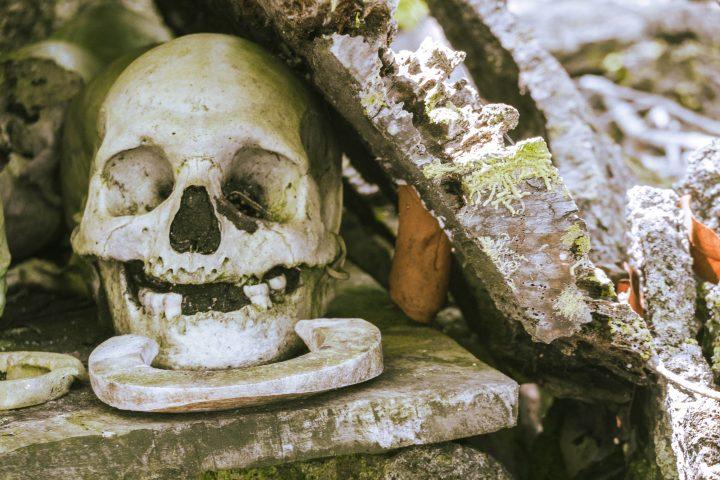
What is Skull Island
Nusa Kunda is one of the most eerily fascinating and culturally significant sites in the Solomon Islands.
Better known as Skull Island because of its collection of skulls and relics from its brutal ancient headhunting traditions that once shaped the region.
Far from being a macabre tourist stop, this small and sacred is an important kastom (custom) site, offering insight into the spiritual beliefs, social hierarchy, and warrior culture of the Western Province.
Where is Skull Island
Skull Island is located in the Vona Vona Lagoon, just off the coast of New Georgia Island.
We visited on our boat journey from Gizo to Munda.
Most local lodges and tour operators can help arrange a visit as it is easily accessible from Munda.
Tips for visiting Skull Island
Always go with a local guide: This is for your safety as much as it is for your education.
Bring a small kastom fee: Usually, a donation of around 50–100 SBD is expected to show respect to the local guardians of the site.
Photography may be restricted: Always ask your guide or local host before taking photos, especially of sacred relics.
Be respectful, duh!: This is an active cultural site so it is important to dress modestly, speak quietly, and DO NOT TOUCH ANYTHING. I am not sure about you, but I do not want to mess around with being cursed by headhunting chiefs.
Combine with nearby activities – Many tours include Skull Island as part of a half-day lagoon trip, which might also include snorkelling or visits to nearby villages.
8. Uncover the secrets of WWII at The Peter Joseph Museum
What is The Peter Joseph Museum
This is a fascinating personal WWII relic collection turned museum. Offering a unique glimpse into life during the colonial era of the Solomon Islands.
It’s loaded with thousands of everyday items to larger war memorabilia and artillery from World War II. Think vintage household goods, radios, tags, typewriters, medical equipment, currency, and weapons. Inviting you to step into an interactive time capsule.
Where is the Peter Joseph Museum
The History behind The Peter Joseph Museum
Joseph Kiriau has put his heart and soul into curating this collection, which has now been opened as a museum named after his late son, Peter Joseph.
What started as a simple passion project collecting artifacts and memorabilia in his spare time, has become one of the most diverse and personal World War collections in the country.
His goal was simple but powerful: to preserve the everyday history of the Solomon Islands for future generations. Today, the museum stands as a heartfelt tribute to both his son and the cultural heritage of the islands.
9. Be invited into a traditional village on Rendova Island
What to expect from the traditional village experience on Rendova Island
This was an unexpected highlight of my week in the Solomon Islands. Seriously, a mysterious clay-covered man pounced from the bushes, SCREAMING during our walk around Tituru Eco Lodge.
What turned out to be a reenactment of what would have happened in the past when foreigners were coming to the local village. Both an intimidation tactic and a way to communicate with their tribe if this was a threat or not.
Don’t worry, you’ll be welcomed into small coastal villages to experience washing in the rivers to drying off by the fire, cooking up a storm in banana leaves to weaving techniques, wood carving and making clothes with the sounds of panpipes and traditional singing guiding you.
If you are looking for a genuine and respectful cultural exchange that leaves a lasting impression, this is it!
Where is Rendova Island
10. Fuel yourself with Lobster

Lobster in the Solomon Islands
Lobster in the Solomon Islands is a luxury without the luxury pricetag for most travellers to enjoy.
It’s all because of the rich marine life and local fishing traditions that make it possible given how common and accessible the catch is..
Typically served grilled, curried, or simmered in rich coconut milk. No matter how you taste it, it’s best to request in advance, especially in remote areas, so your hosts can arrange a fresh catch that day.
How much is food in the Solomon Islands
Food in the Solomon Islands can be surprisingly afforable despite how remote it is.
- Local village or market meals cost around 30–70 SBD ($5–$12 AUD).
- Seafood plates at casual beach lodges or eateries range from 80–150 SBD ($15–$25 AUD).
- Lobster meals often cost between 100–200 SBD ($18–$35 AUD). A steal compared to prices in Australia or New Zealand.
- Western-style meals or dining at resorts are more expensive, typically 200+ SBD ($35+ AUD).
- Imported snacks and packaged goods can be pricey, so stick to fresh produce, local cooking, and homemade meals whenever possible.
11. Snag a window seat on your domestic flights
Experience the best views of the Solomon Islands
The Solomon Islands are famous for what they look like underwater but do not underestimate the magic it holds from above.
Its a painting of deep blues and glistening turquoise with specs of lush greeny highlighted by the glowing white sands.
Each island so unique, and above you see how beautiful they come together to make this otherworldly and insanely underrated country.
How to book a window seat on Solomon Airlines
On most, if not all, internal flights within the Solomon Islands, there is no preset seating. Which means to snag a window seat you need to get in early, ready to board first.
Luckily, the planes are quite small, meaning even on the aisle seat you still be able to oogle out of the windows.
12. Kayak through the lagoons of Munda
Kayaking at Titiru Eco Lodge
Supplied by the hotel, you can pick out a kayak and hit the lagoon.
Nestled in the calm waters of Vona Vona Lagoon, the eco lodge offers guided or self-guided kayaking trips through lush mangroves, over coral reefs and around the traditional villages.
Keep an eye out for resident reef sharks, flying fish or even dolphins! We saw none of during our 15 minutes on the water, but still had a blast!
Where is Titiru Eco Lodge
How to book this Kayaking Tour
13. Reel in the world-renowned fishing
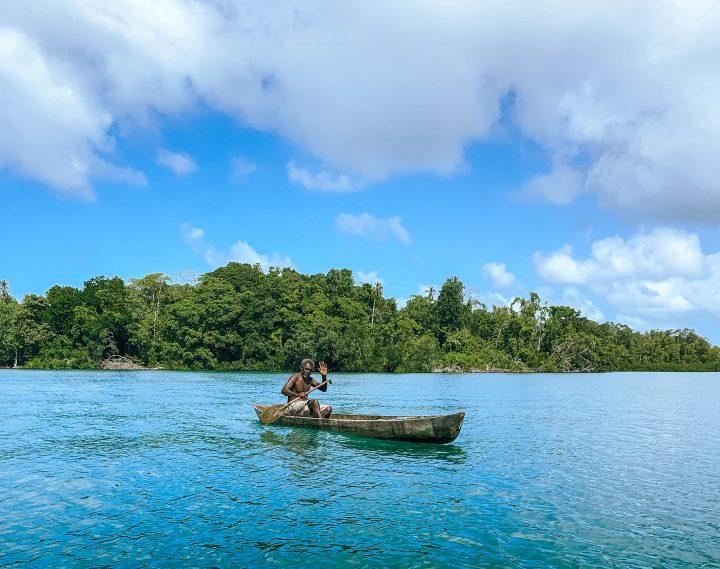
What makes the Solomon Islands famous for fishing
The Solomon Islands remain a mystery for most, but it’s been a paradise for avid anglers for years. Widely recognised as some of the best sport and game fishing in the South Pacific.
With varied deep channels, outer reef drop-offs, mangrove estuaries, and crystal-clear lagoons, the Sollies offers insane fish diversity in waters that are largely untouched by commercial fishing.
How to book a fishing trip in the Solomon Islands
Booking a fishing trip in the Solomon Islands is best organised through your accommodation or a local fishing charter.
The top operators based on recommendations from Visit Solomons:
- Dive Munda: They also offer game fishing charters.
- Fatboys Resort (Gizo) : Offers fishing trips along with island hopping.
- Titiru Eco Lodge (Vona Vona Lagoon) : Community-based and great for reef fishing.
- Uepi Island Resort (Marovo Lagoon): Ideal for experienced anglers seeking serious sportfishing.
14. Find out why the Solomon Islands are a Surfing Paradise
What makes the Solomon Islands famous for surfing
I don’t know much about surfing, nor did I experience it during my stay. However simple by the sheer number of surfboards that were on our flights from Brisbane, it wouldn’t be a ‘Things to do in the Solomon Islands’ post without a mention of its hidden gem surfing scene.
We heard people brag about uncrowded breaks, consistent swells, and warm, crystal-clear water. Not only for the tourists, but its deep connection to local culture with many of the best breaks near traditional villages.
Locals are welcoming and proud to share their waves, provided visitors show respect and follow surf etiquette.
Where is the best surfing in the Solomon Islands
The best surf spots are mostly found in the Western Province and Isabel Province.
- Papatura Island (Santa Isabel) + Papatura Island Retreat: Home to the country’s only dedicated surf resort with access to over 10 consistent breaks. This is the most developed surf destination in the Solomons.
- North Malaita & Lau Lagoon: Remote and rarely surfed, this area has excellent waves during the right swell but requires local knowledge and boat access.
- Gizo Region: While not as consistent, the outer reef passes around Gizo can produce some quality waves during cyclone season.
When is the best time for surfing in the Solomon Islands
Running from October to April, peak surf season is when the north swells hit most consistently.
15. Island Hopping every chance you get
My island-hopping highlights
Forget the Philippines, Croatia sail or even the Maldives, if I could only recommend one destination for island hopping it would be the Solomon Islands.
Nothing compares to the untouched nature and unique landscapes of the Happy Isles with surprises around every corner, both below and above.
We spent the majority of our time between the fluorescent turquoise waters of Gizo to the mangroves of Munda and I still feel like I only scratched the surface of the island hopping potential.
How to book an Island Hopping trip in the Solomon Islands
- Stay at island-based lodges like Fatboys (Gizo), Uepi Island Resort (Marovo), or Titiru Eco Lodge (Vona Vona) offer day trips or custom boat tours.
- Ask your hotel or guesthouse to arrange a local boat and guide.
- Dive shops like Dive Gizo or Dive Munda often offer snorkelling and island-hopping combo tours.
- For more remote areas, community-based tourism networks can link you with hosts who arrange multi-island visits.
Prices vary, but expect to pay around 300–600 SBD ($50–$100 AUD) for a full-day boat hire, depending on the distance and number of stops.
16. Dolphin Spotting at the Wild Dolphin Nursery
What is the Wild Dolphin Nursery
This is a natural coastal area where pods of wild bottlenose dolphins gather, breed and raise their young in protected waters.
This is far from a captive nursery or aquarium; it is a rare and respectful way to observe dolphins in their natural habitat.
Where is the Wild Dolphin Nursery
The sanctuary is located just off the shores of Savo Island, a volcanic island making an easy day trip from the capital of Honiara, taking only aprrox 45 minutes to an hour, depending on sea conditions.
Unfortunately, our Savo Island tour was cancelled due to those sea conditions with a big storm looming. Something to note and plan around.
Klook.com17. Hike an active Volcano on Savo Island
What is the volcano on Savo Island?
Beyond the dolphin sanctuary, Savo Island is most famous for its active Volcano, simply named, Savo.
Though it hasn’t erupted since the mid 1800’s, it remains geothermally active with steaming vents, bubbling mud pools, and natural hot springs scattered across the island. Playing a key role in local culture and daily life, with communities using its geothermal heat to cook food and boil water.
How to get there
Again, Savo Island lies about 35 km northwest of Honiara and is only accessible by boat. The ride from Honiara takes about 45 minutes to 1 hour, depending on sea conditions. Or not at all if you have the same stormy luck we did.
18. Visit the Museums and WWII sites in Honiara
The best museums in Honiara
Solomon Islands National Museum: – Find this small museum in central Honiara. Showcasing traditional artefacts, WWII relics, and cultural displays. Don’t miss the outdoor area with traditional village huts from around the country.
📍 Mendana Ave | Free entry or donation
Vilu War Museum: An open-air collection of WWII aircraft, guns, and tanks, about 45 mins west of Honiara city. Raw, rusted, and deeply atmospheric.
📍 Vilu village | Small entry fee
The best WWII sites in Honiara
Skyline Ridge American War Memorial (Hill 73): A peaceful hilltop site with incredible views and detailed displays on the Battle of Guadalcanal.
Bloody Ridge Memorial: Site of one of the war’s most intense battles, now a national peace park with panoramic views and a walking trail.
Henderson Field: Now Honiara’s airport, this former airstrip played a pivotal role in the Pacific War. An easy stop across the road once you pick up your luggage from your flight.
19. Go Wreck Diving with sunken planes and ships
Where are the best diving spots in the Solomon Islands
The Solomon Islands is one of the best-kept secrets in the diving world, offering incredible biodiversity, unbelievably clear water, and historic WWII wrecks, without the crowds.
- Munda: Known for shark encounters, vibrant reefs, caves, and wrecks, including the famous Douglas Dauntless bomber.
- Gizo: Home to the iconic Toa Maru shipwreck, plus stunning coral gardens and drift dives.
- Tulagi & Iron Bottom Sound (near Honiara): Wreck diving paradise, with dozens of WWII ships, planes, and submarines resting beneath the surface.
Why are there so many wrecks to dive with?
If you somehow haven’t picked up on it yet, there is a deep (literally) and intense World War II history in the Solomon Islands.
Dozens of warships, aircraft, and submarines from both Allied and Japanese forces sank in the surrounding waters. There’s even a diving hotspot called Iron Bottom Sound, named for the sheer number of wrecks beneath it.
20. Snorkel in the crystal clear waters… EVERYWHERE
What is so special about snorkelling in the Sollies
The Solomon Islands offers unique and diverse landscapes no matter if you are a first-time snorkeller or world-champ free diver.
From calm sandy beaches to big drop-offs swarming with manta rays, often within the one island (like Njari I bragged about earlier!). There are so many ways to experience the underwater culture of the Solomon Islands; no dive or day will ever be the same.
My favourite Snorkel spots in the Solomon Islands
- Kennedy Island
- Njari Island
- Fatboys Island Resort
- Imagination Island
- Sanbis Resort
21. Enjoy the best sunrises and sunsets of your life
no words, just look at it!!!!
My favourite Sollies Sunset Experiences
- Fatboys Resort beachfront bungalow: After long days spent island hopping in the sun it is easy to crave a sleep-in in but once I saw the panoramic views glowing through the curtains, I pounced from bed to the balcony. Soon, admiring the colourful skies from the beach hammock and oh boy, it was pure magic from the beach with the waves washing over our feet.
- Sunset wine-down: I already raved about this in detail above but it deserves another mention because it was an extra special memory I will treasure for the rest of my life.
- Munda sunsets: With a strange haze washing over the sky, already scattered with clouds, my expectations were low for the final sunset. Oh my, did the Solomons prove me wrong by sending us off with a bang. From a small island that we once again had all to ourselves, we watched as the sky burst on fire at the very last minute.
Unique Places to Stay in The Solomon Islands
22. FatBoys Island Resort
Fatboys Resort is the most popular accommodation in the Solomon Islands, and for good reason.
Welcoming you in from its overwater restaurant you are already treated to the pristine waters and marinelife buzzing below (you may even spot a shark or 10!). You’ll likely spend a lot of time here sipping of cockatils and delicious feasts. From banan pancakes in the morning to fresh lobster at night.
The beachfront bungalows are a rustic resting place for being the perfect base for the rest of your island hopping adventures. Lined up perfect for stunning sunrises and only a short walk to the traditional local village on the island.
Truly offering sustainable tourism and cultural immersion like no other in the heart of the historic Gizo Islands.
23. Sanbis Resort
On the opposite side of the island to Fatboys Resort, Sanbis Resort is the sunset dream.
With its own selection of private waterfront bungalows, still with the same rustic charm, its a hidden gem for travellers looking to escape the ordinary.
We only had the chance to stop in for a quick morning tea here but the water was some of the brightest we saw in the Sollies and you could easily settle in here for the ultimate week of relaxtion.
The main three split level lodge boasts a large entertainment space, dining area, more lounging and a mindblowing sun deck with BBQ facilities and a 6 person spa bath. What more could you want!
24. Titiru Eco Lodge
Before we saw the lodge we could hear the gentle hums of the locals singing to welcome us echoing through the mangroves of Munda. Lined up along the main jetty with instruments and big smiles.
The bungalows are sheltered around the mangroves and forests between Egholo and Ughele Villages on Rendova Island. Forget the beach holiday, this is a unique landscape for the nature lovers looking to connect deeper with the culture, flora and fauna of the Solomon Islands.
The surrounding natural beauty provides numerous activities to keep our guests intrigued, including mangrove forest walks, paddling dug out canoes on Soqiri Cove, night crabbing, game fishing and visiting our marine protected area. – Visit Solomons
Caves, kayaking, mountain climbing, traditional villages… Titiru Eco Lodge is the ultimate Solomon Islands adventures spot.
25. Imagination Island
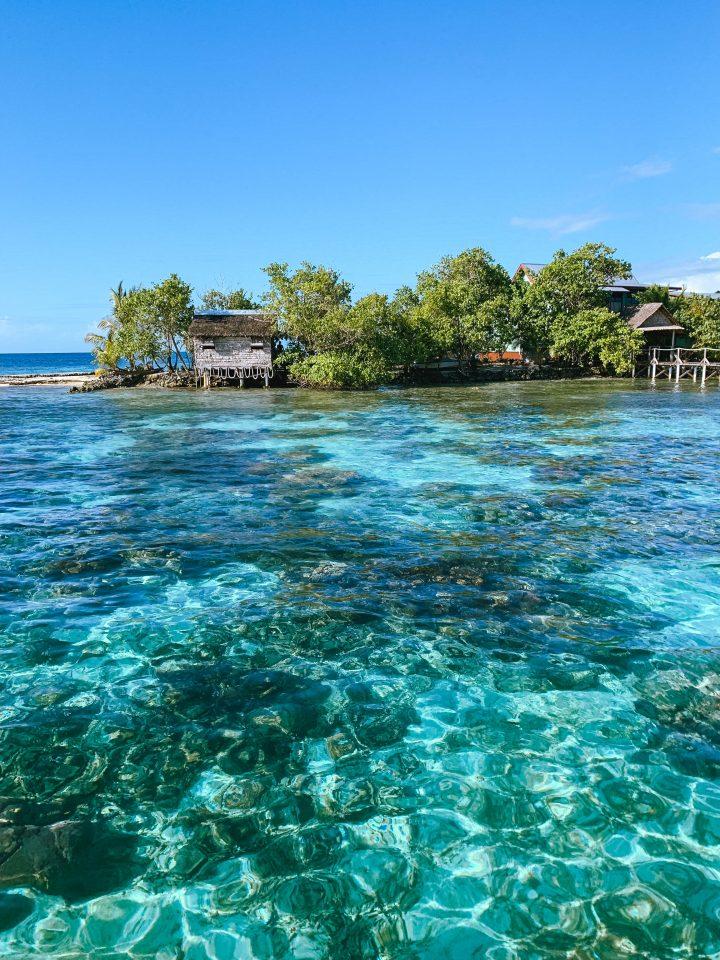
Again this was only a short afternoon stop in and snorkel spot me but it gave us enough time to get chatting with the guest and hosts that RAVE about this beyond your wildest imagination island (see what I did there haha)
1 & 2 bedroom bungalows only accessed by private boardwalk are all handcrafted with love and locally made materials from the inside out. Yes, even the hammocks!
As you sit at your private deck which offer views of the surrounding islands and sunset, you will also be able to spot many species of fish, small black-tip reef sharks and possibly even manta rays and sea turtles, among other marine species in the waters just beyond your bungalow. – Visit Solomons
Being a short 5 minute boat ride away from Gizo airport it is no wonder this has become a favourite spot for travellers, especially in the fishing and surfing communities so we were told!
26. Zipolo Habu Resort
Located on Lola Island in Vona Vona Lagoon in the Western Province lies Zipolo Habu. Nestled within a blue lagoon and fringed by white sands and tall green palms, Lola truly reflects a quintessential island paradise.
Whilst known for sportsfishing in the lagoon or beyond the reef, Zipolo Habu can also arrange diving, surfing or tours to many close by sites. Their bungalows are constructed using local materials and provide an authentic island living experience. All bungalows are equipped with power, fans and a kitchenette.
What You Need to Know Before You Go to the Solomon Islands
For all the juicy details on making your Solomon Islands dreams come true, read my ULTIMATE SOLOMON ISLANDS GUIDE HERE
How to get to the Solomon Islands
Solomon Airlines, the national carrier, operates regular flights to Honiara International Airport from Brisbane multiple times per week, along with services from Nadi (Fiji), Port Vila (Vanuatu), and Port Moresby (Papua New Guinea). The airline also codeshares with Qantas and Air Niugini, making it easier to connect from further abroad.
In exciting news for travellers, Munda International Airport on the island of New Georgia is now open for international connections. This new gateway continues to expand access to the stunning Western Province and links seamlessly with Solomon Airlines’ domestic network, including flights to Gizo, Seghe in the Marovo Lagoon, and Suavanao on Santa Isabel.
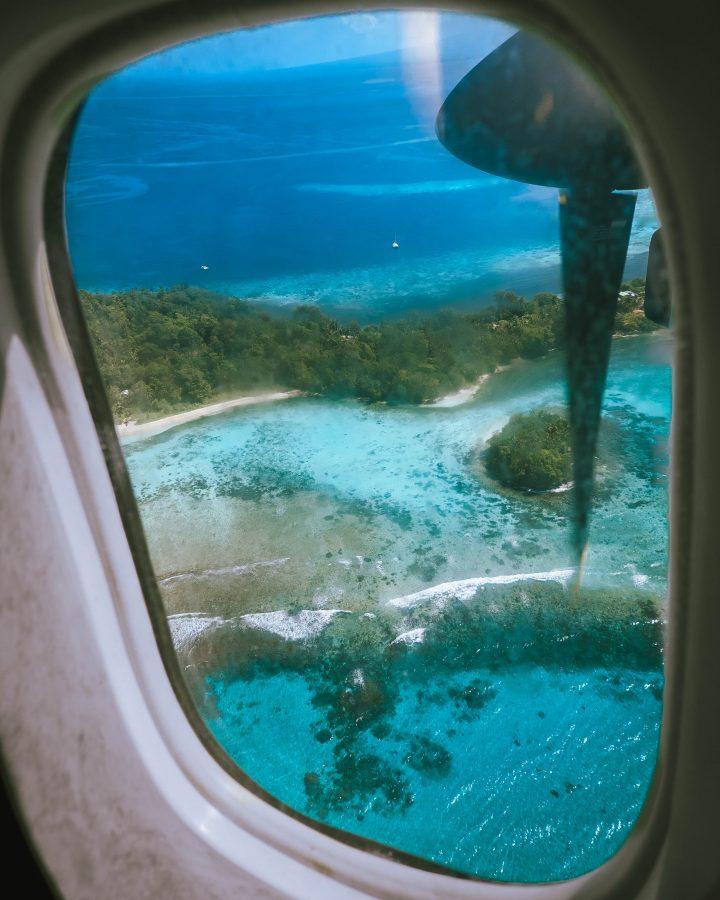

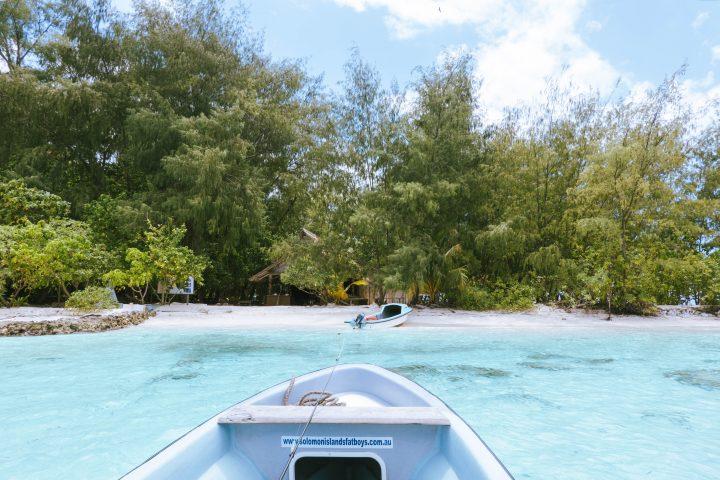
What currency is used in the Solomon Islands
The official currency of the Solomon Islands is the Solomon Islands Dollar (SBD).
While major hotels and some tour operators may accept credit cards, cash in the Solomon Islands is essential. ATMs are available in the capital, but are limited elsewhere, so make sure to have enough on hand to get you by.
Best time of year to visit the Solomon Islands
Each season brings something unique to this hidden South Pacific paradise. Here’s a quick guide to help you plan what is best for YOU!
🌧️ Wet Season (November – April):
Expect hot, humid days with tropical downpours, especially in the afternoons. While it’s low season, the landscapes are lush and green, waterfalls (yes, waterfalls!) are at their most powerful, and you’ll find fewer tourists around.
☀️ Dry Season (May – October):
This is the peak time to visit. Cooler temperatures (relatively speaking), less rainfall, and ideal conditions for outdoor activities like hiking, snorkelling, village visits, and exploring remote islands. It’s also when festivals and cultural events are more frequent, giving you a better chance to connect with local traditions.
🎣 Bonus Tip:
Fishing, surfing, and diving are great year-round, but for the clearest waters, aim for August to October. This is also a prime window for wreck diving, especially in places like Gizo and Tulagi.
Is the Solomon Islands Safe
Like most places around the world, safety will come from research and common sense.
It is advised to proceed with your usual levels of caution; carrying your values on your body, avoid drinking tap water, and not walking alone at night (particularly within the main cities and squatter settlements)…
Don’t worry, safe drinking water was easy to obtain, and a fresh coconut even easier! And as always, respect local customs and traditions.
The BEST things to do in the Solomon Islands from my experience
The Solomon Islands may be a hidden gem for most but for diving, fishing and surfing it is FAMOUS!
Funnily enough, those are 3 things I do not do/don’t have much interest in, yet the Sollies still became one of my favourite places in the entire world because it has so much more on offer you need to experience at least once in your life.
It is not hard to see why it is called the Hapi Isles because the people are incredibly kind and welcoming, excited to immerse you in their culture. Making those traditional workshops, village tours and market visits a must-do.
Don’t get me started on the most insane water that photos do not do justice. When I tell you the beaches sparkle, I mean it! You do not have to go deep sea diving to appreciate its magic. Although you would be crazy not to at least jump in for a dip and a snorkel.
If there is only one thing I could recommend for you to experience in the Solomon Islands, though, it would be island-hopping. Hop on a boat and zip around the most vibrant and otherworldly landscape you will ever witness.
And this is only the teaser, you can find my Ultimate Solomon Islands Guide HERE
Of course, if you ever have any questions or are feeling extra nosy and want more in-depth insight, do not hesitate to comment below or DM @wanderingdonut ♡




